Sage green painted brick has surged in popularity as homeowners seek a timeless yet fresh exterior palette that harmonizes with nature and architectural styles alike. This muted green-gray hue imparts tranquility and depth, transforming traditional brick façades into sophisticated canvases that work across farmhouse, modern, cottage, and eclectic designs. From contrasting trim to monochromatic layering, sage green offers versatility—whether you’re aiming for rustic charm or sleek minimalism. Below are 20 thoughtfully curated ideas to inspire your next exterior update, each demonstrating how sage green-painted brick can elevate curb appeal and reflect personal style.
1. Classic Farmhouse Charm

Embrace the quintessential farmhouse aesthetic by pairing sage green-painted brick with white trim and rustic wood accents. The soft, earthy tone of sage green complements weathered wood beams, barn doors, and a welcoming front porch, creating an inviting, lived-in look. Opt for matte or eggshell finishes to maintain an authentic country feel, and enhance natural textures with planters of lavender and rosemary for a harmonious color palette. This combination evokes timeless rural elegance while providing a modern twist on traditional farmhouse exteriors.
2. Modern Minimalism

For a sleek, contemporary appearance, paint brick in a cool sage-green hue and pair it with black metal-framed windows and simple geometric lines. The muted green softens stark modern forms, offering warmth without overpowering minimalist architecture. Incorporate large panes of glass, flat-roof overhangs, and concrete accents to contrast with the gentle brick color, achieving a balanced interplay of softness and structure. Matte finishes work best here, emphasizing the understated elegance central to minimalist design.
3. Cottage Core Appeal
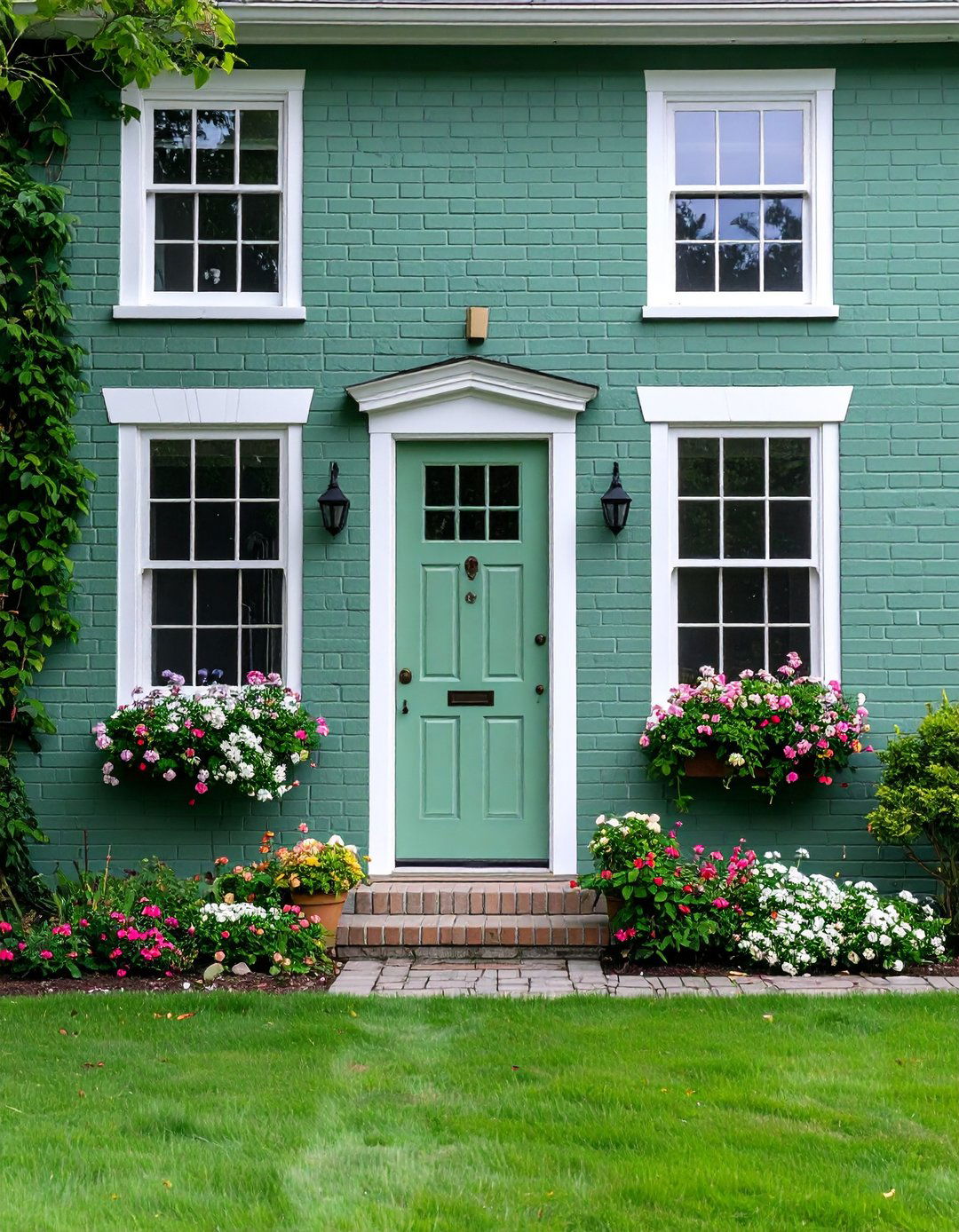
Channel storybook charm by combining sage green-painted brick with multi-pane windows, window boxes overflowing with blooms, and a pastel-hued front door. The gentle green provides a calming backdrop for floral accents like peonies and hydrangeas, enhancing the romantic cottage-core vibe. Choose cream or soft beige trim to lighten the façade and highlight architectural details such as decorative shutters or curved eaves. This whimsical approach melds nostalgia and comfort, inviting a cozy, fairytale–inspired exterior.
4. Mediterranean Influences
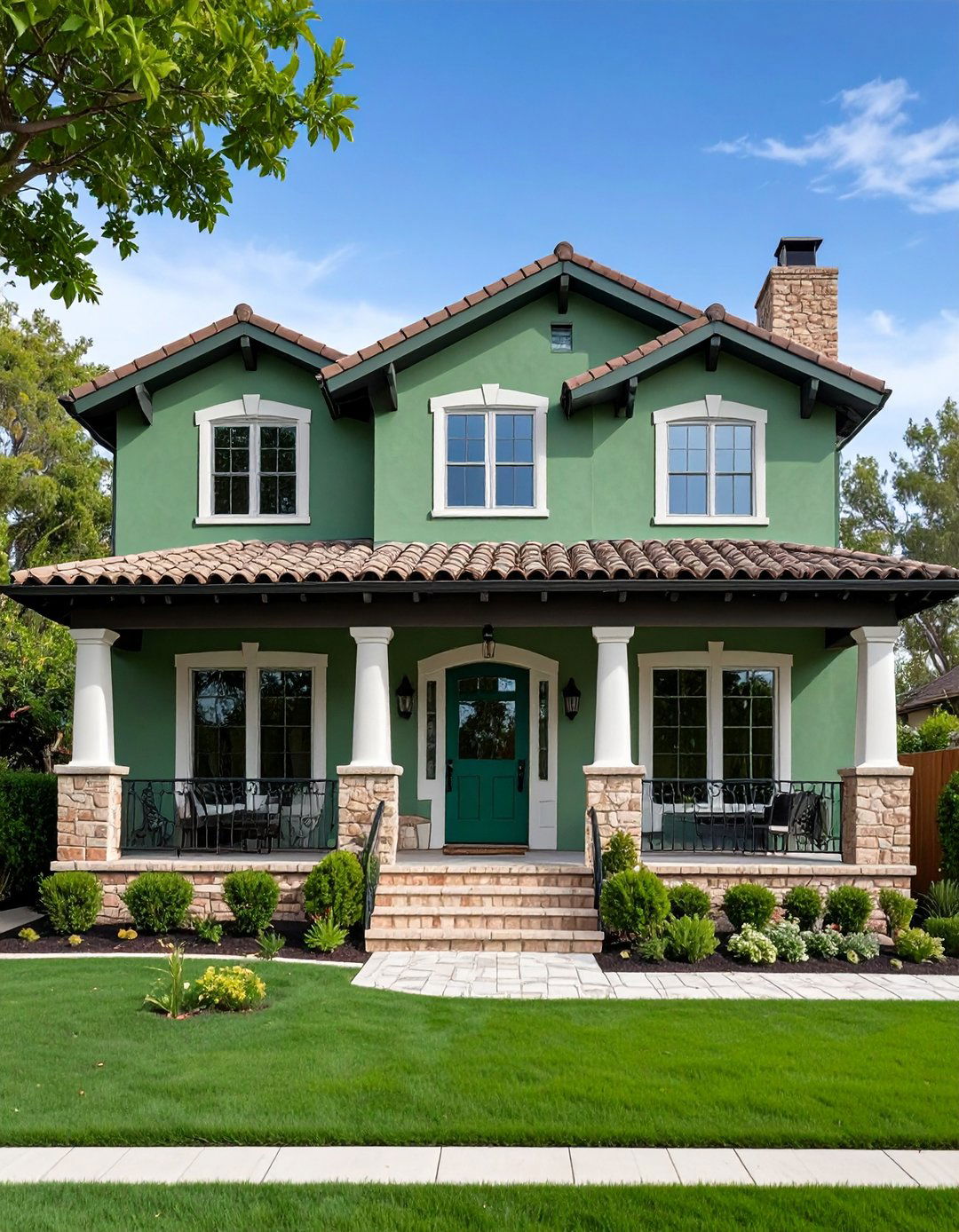
Invoke sun-drenched Mediterranean charm by using sage green brick alongside terracotta roof tiles, wrought-iron railings, and arched doorways. The muted green acts as a subdued foil to warm clay tones, creating a climate-inspired palette reminiscent of coastal villas. Incorporate mosaic tile accents around entrances and water features, and accessorize with olive trees and drought-tolerant succulents. This fusion celebrates earthy materials while leveraging sage green’s versatility to bridge cooler and warmer hues seamlessly.
5. Midcentury Modern Twist

Update retro-inspired façades by painting brick sage green and pairing it with teak wood detailing, butterfly roofs, and minimalist planters. The subtle green complements period-correct accent colors like mustard yellow or burnt orange, while also toning down any harsh red brick undertones. Maintain clean horizontal lines and integrate clerestory windows to capture natural light. This approach honors midcentury design principles—simplicity, organic forms, and integration with nature—reinvented through a contemporary color lens.
6. Industrial Edges

Soften industrial exteriors—exposed steel beams, corrugated metal, and large factory-style windows—by painting brick a muted sage green. The color adds a layer of warmth to otherwise cool, utilitarian materials, creating an inviting yet edgy look. Accent with concrete planters and minimalist lighting fixtures in matte black. The interplay of rugged textures and subdued color fosters a balanced industrial-chic aesthetic ideal for converted warehouses or loft-style homes.
7. Scandinavian Simplicity
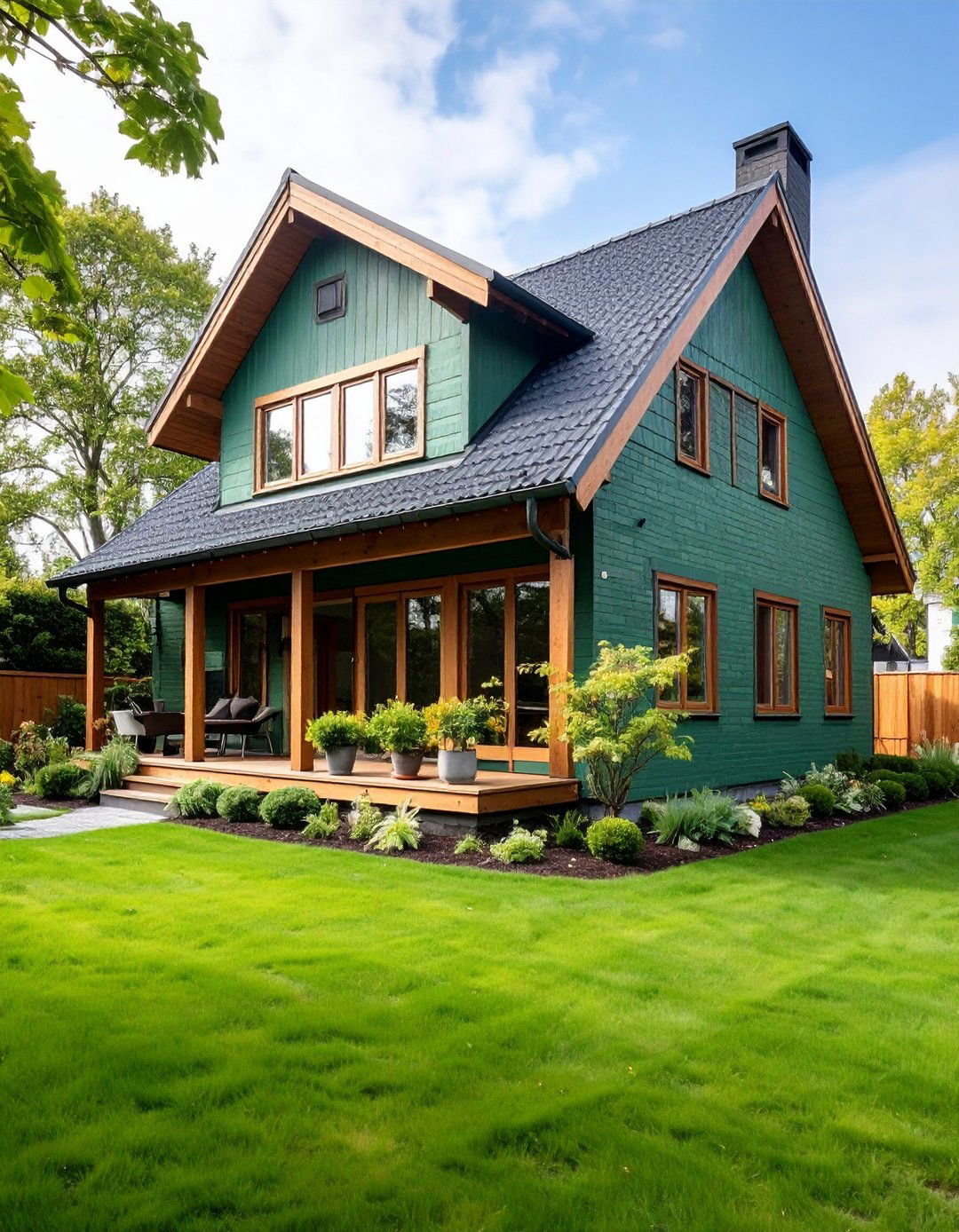
Highlight Nordic design’s emphasis on functionality and lightness by combining sage green-painted brick with pale wood panels and ample glazing. The light, muted green echoes natural landscapes, while birch or pine siding brings additional warmth and texture. Keep ornamentation minimal—recessed lighting, streamlined hardware, and simple landscaping with grasses and moss. This clean, nature-inspired exterior feels both cozy and contemporary, reflecting Scandinavian principles of hygge and harmony.
8. Coastal Vibes
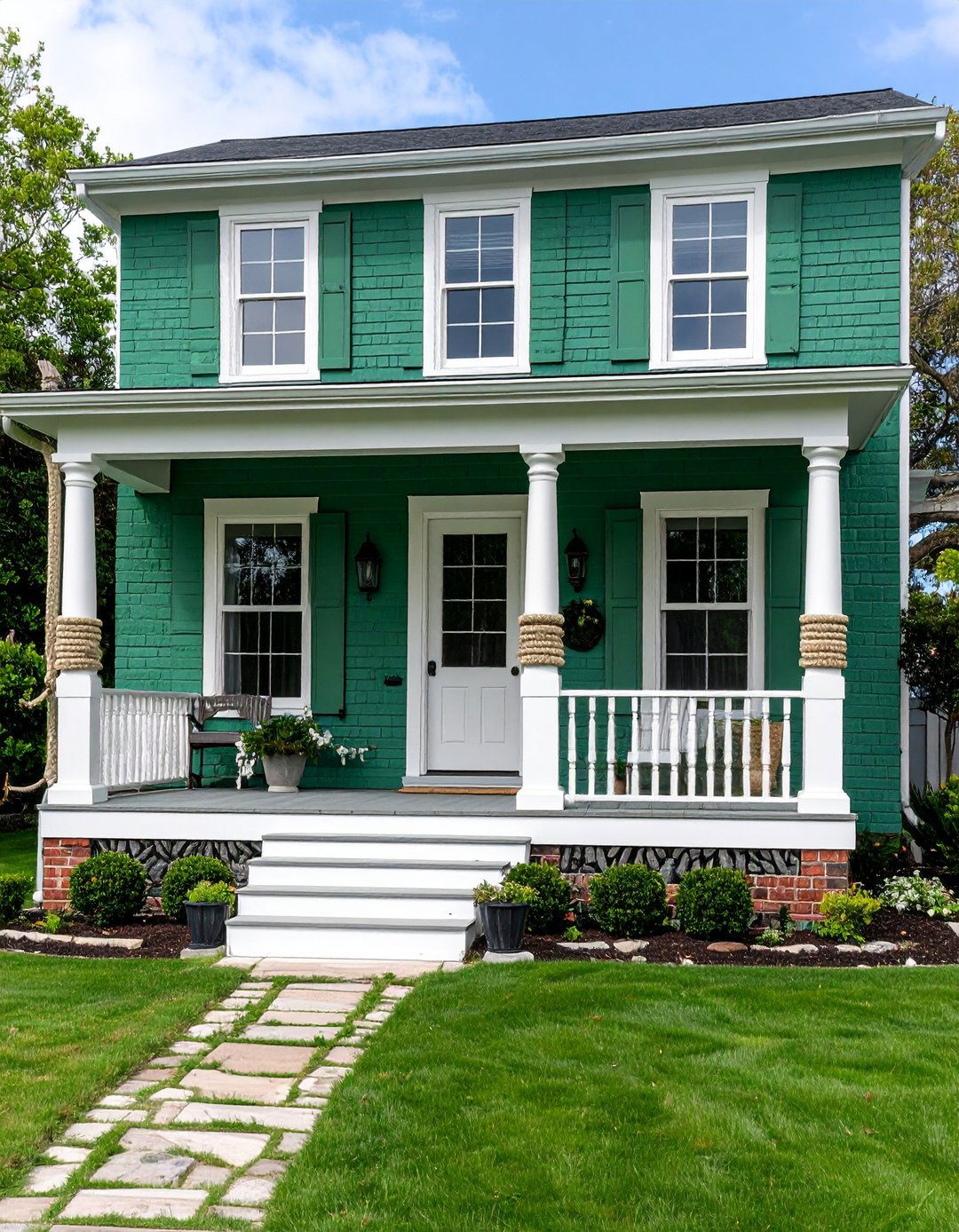
Evoke seaside serenity by pairing sage green brick with crisp white trim, beadboard accents, and nautical hardware. Incorporate large windows or glass doors to capture ocean views, and add board-and-batten details painted in contrasting white or soft sand hues. Accent with rope-wrapped columns, weathered driftwood planters, and lush, low-maintenance coastal grasses. Sage green’s subtle depth complements water and sky tones, reinforcing a laid-back, beach-inspired atmosphere.
9. Victorian Elegance
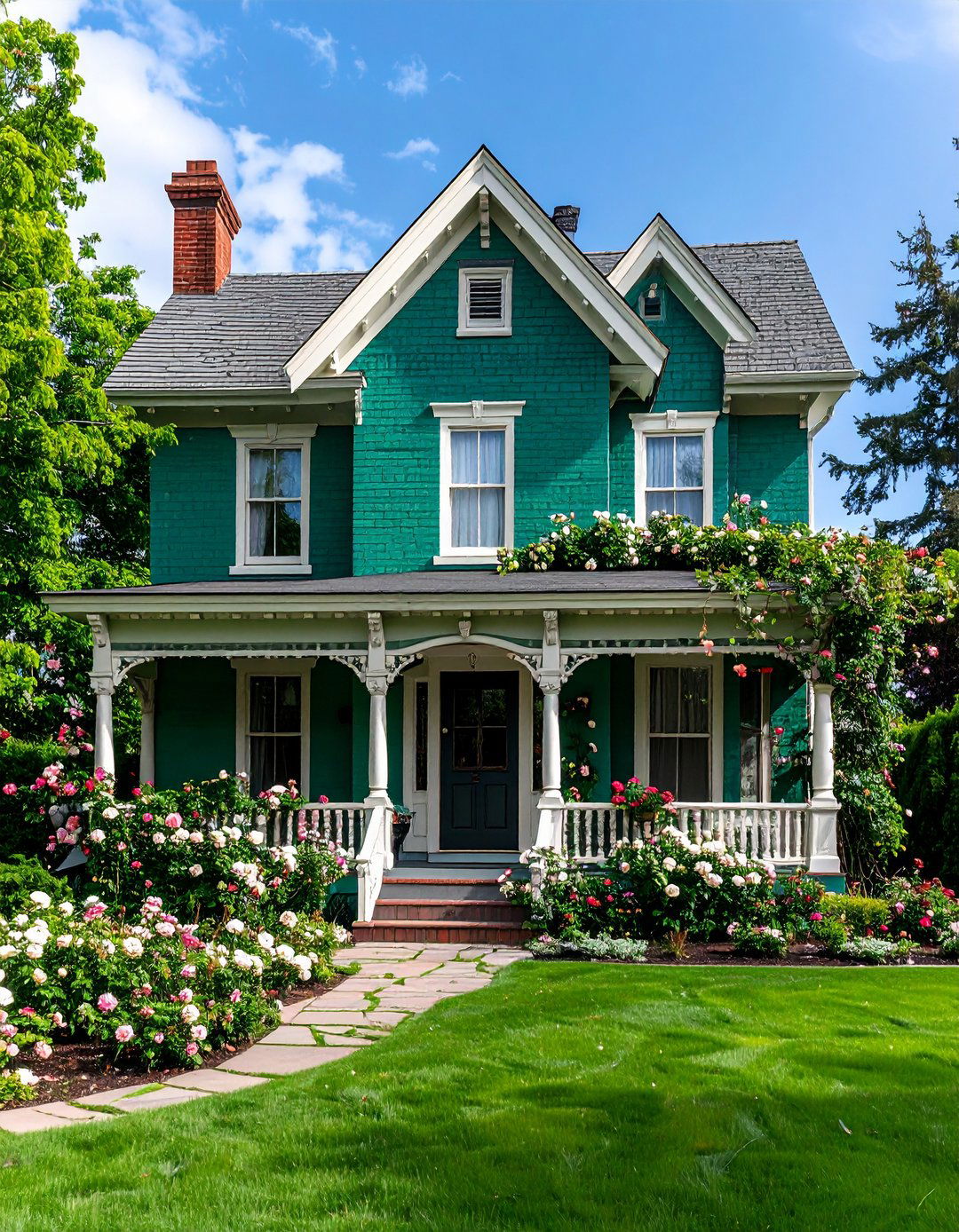
Transform ornate Victorian-era details by painting brick a refined sage green and highlighting moldings, cornices, and balustrades in cream or ivory. The soft green base allows decorative elements—gingerbread trim, stained-glass windows, and wrought-iron fencing—to stand out without competing. Add climbing roses or ivy for a romantic, time-honored garden feel. This palette update balances historic grandeur with a refreshed, soothing hue that still pays homage to period craftsmanship.
10. Rustic Barn Conversion
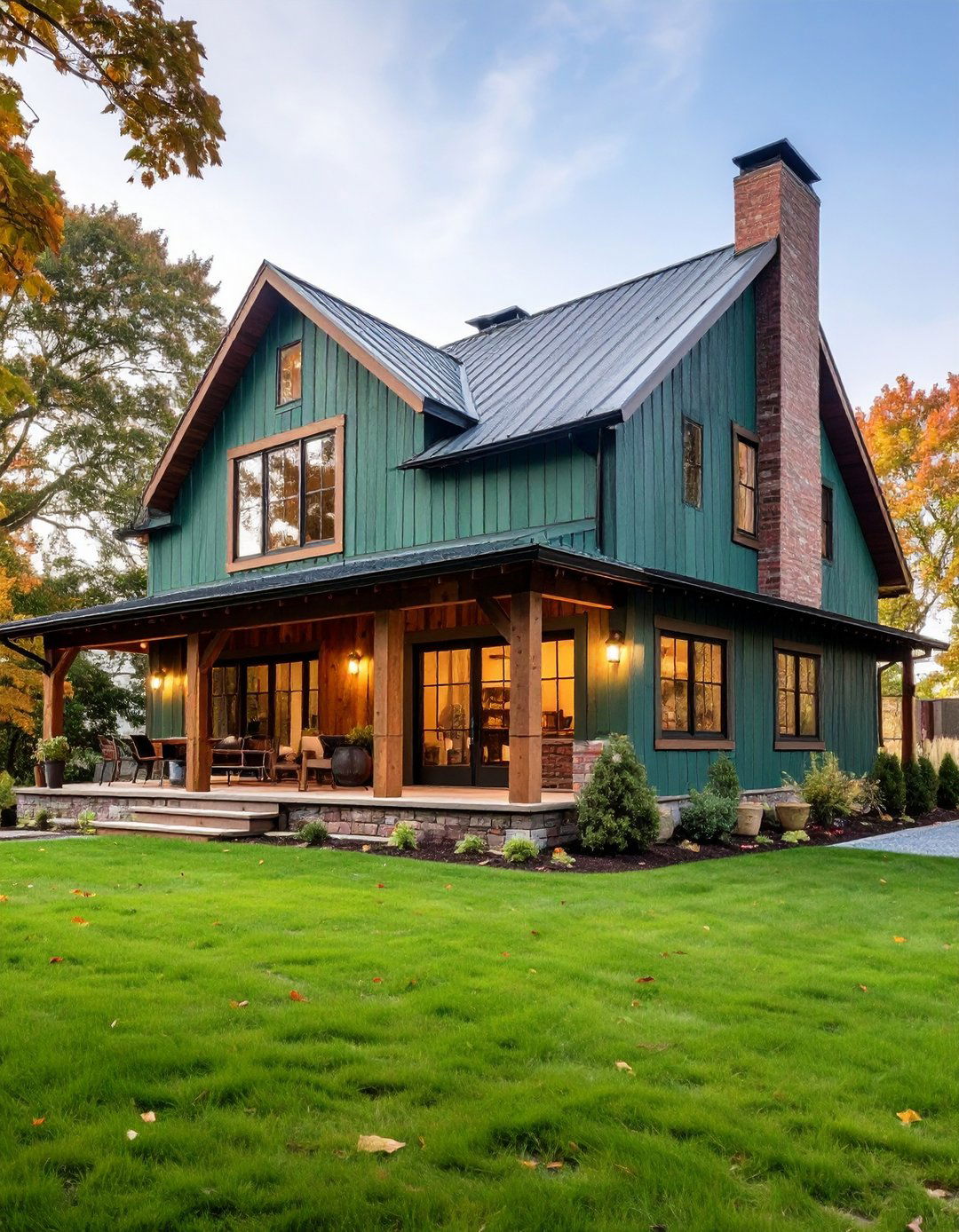
Reimagine an old barn by applying sage green paint to brick lower walls, while retaining weathered wood siding above. The green base unifies disparate materials—stone foundations, reclaimed timber, and metal roofs—under a cohesive color story. Use matte finishes to preserve texture and authenticity. Enhance with barn-style sliding doors and industrial-style lighting. This approach maintains rustic integrity while introducing a modern color that blends with rural landscapes.
11. Transitional Style
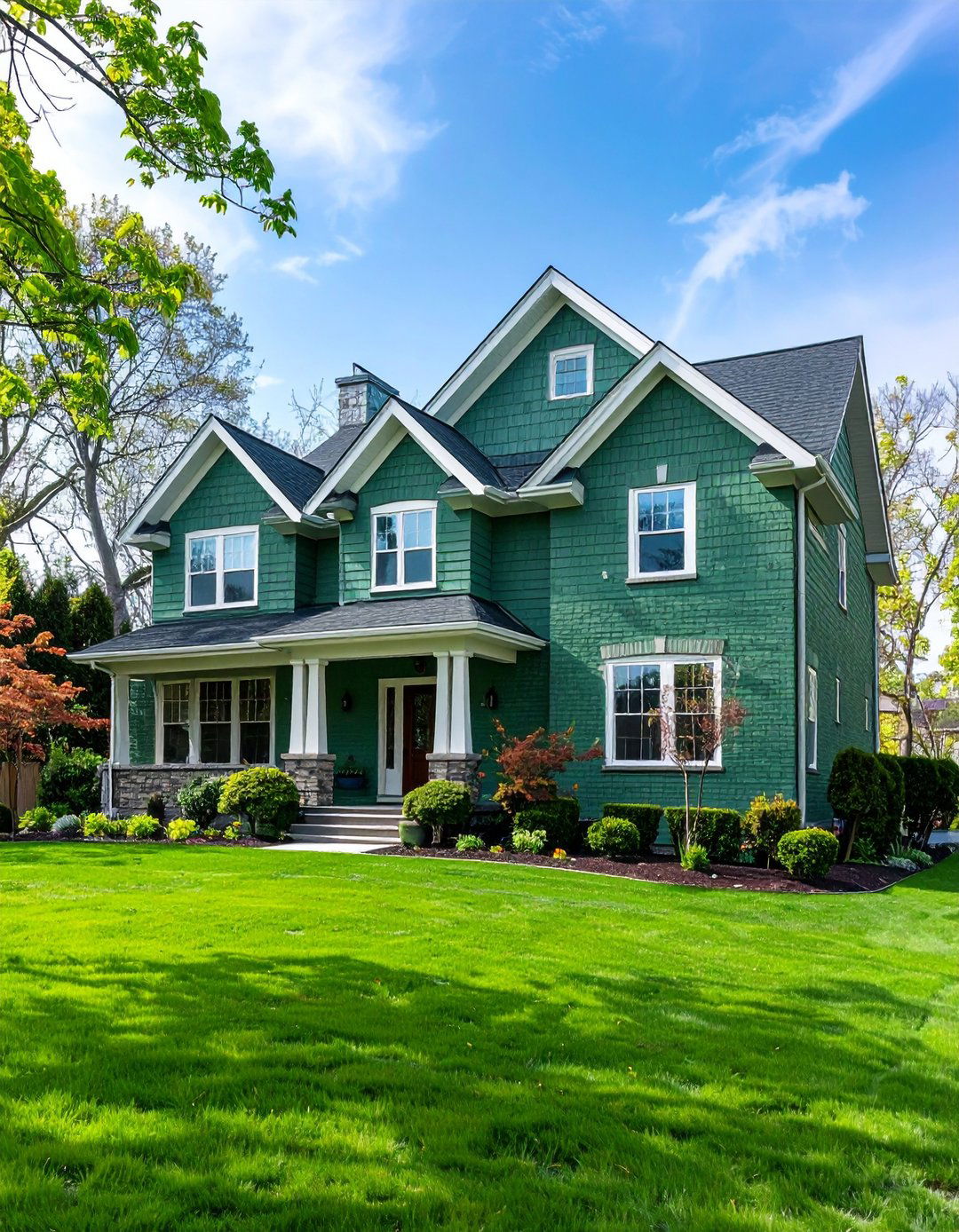
Bridge traditional and contemporary design by painting brick in a mid-tone sage green and combining it with clean-lined windows and classic dormers. Incorporate symmetrical façades, balanced porticos, and understated moldings that reference historic forms, then update materials—steel frames, limestone accents, and composite siding—for modern performance. Sage green serves as the perfect transitional hue, anchoring diverse elements in a unified, polished look.
12. Eclectic Mix
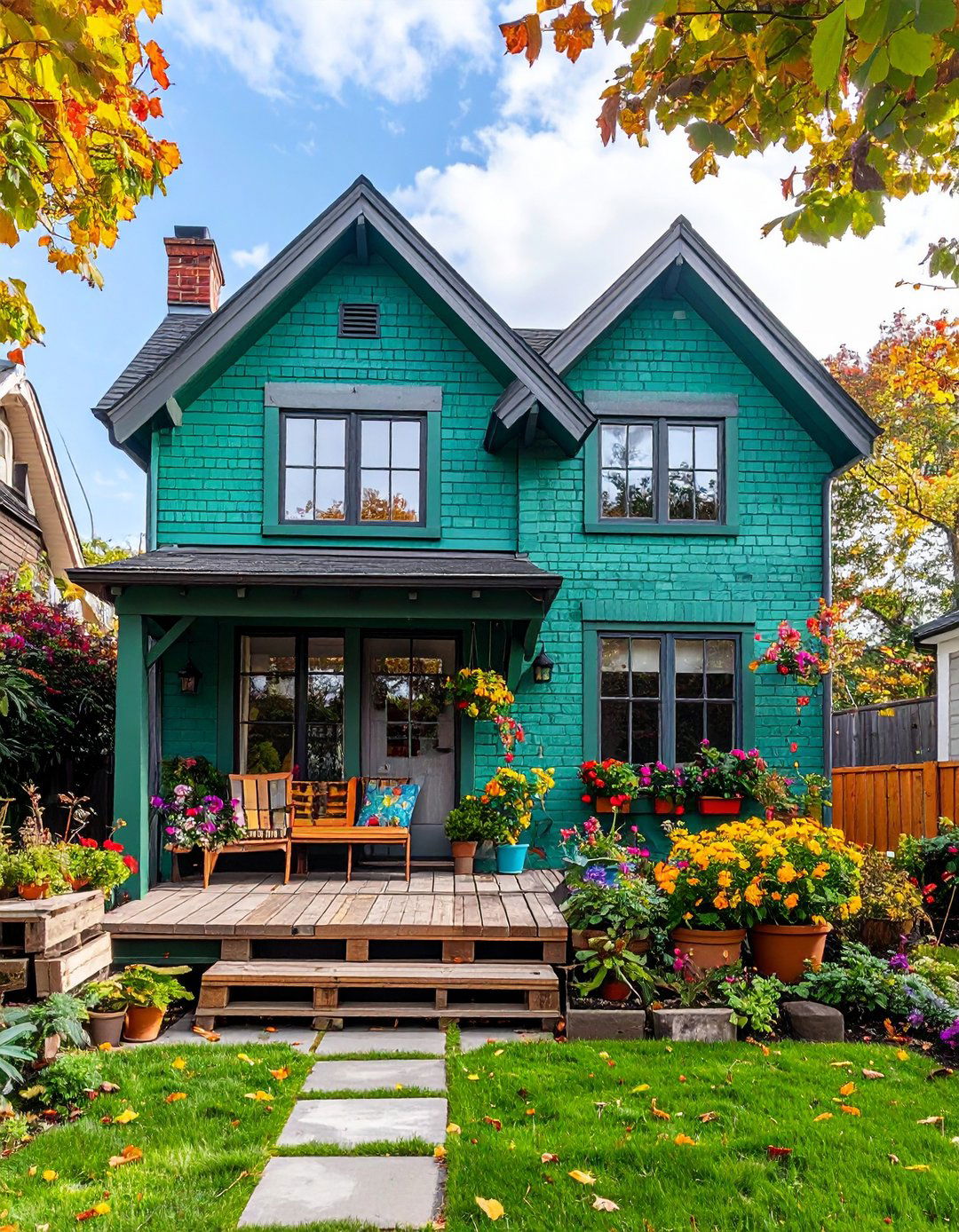
Unleash creativity by pairing sage green-painted brick with unexpected materials—neon metal panels, colorful ceramic tiles, or reclaimed shipping pallets. The muted green backdrop highlights bold textures and patterns without overwhelming the composition. Layer various paint finishes—matte brick, satin trim, gloss accents—for visual intrigue. This free-form approach celebrates individualism, transforming a simple brick structure into a dynamic, artful façade.
13. Tudor Cottage Fusion
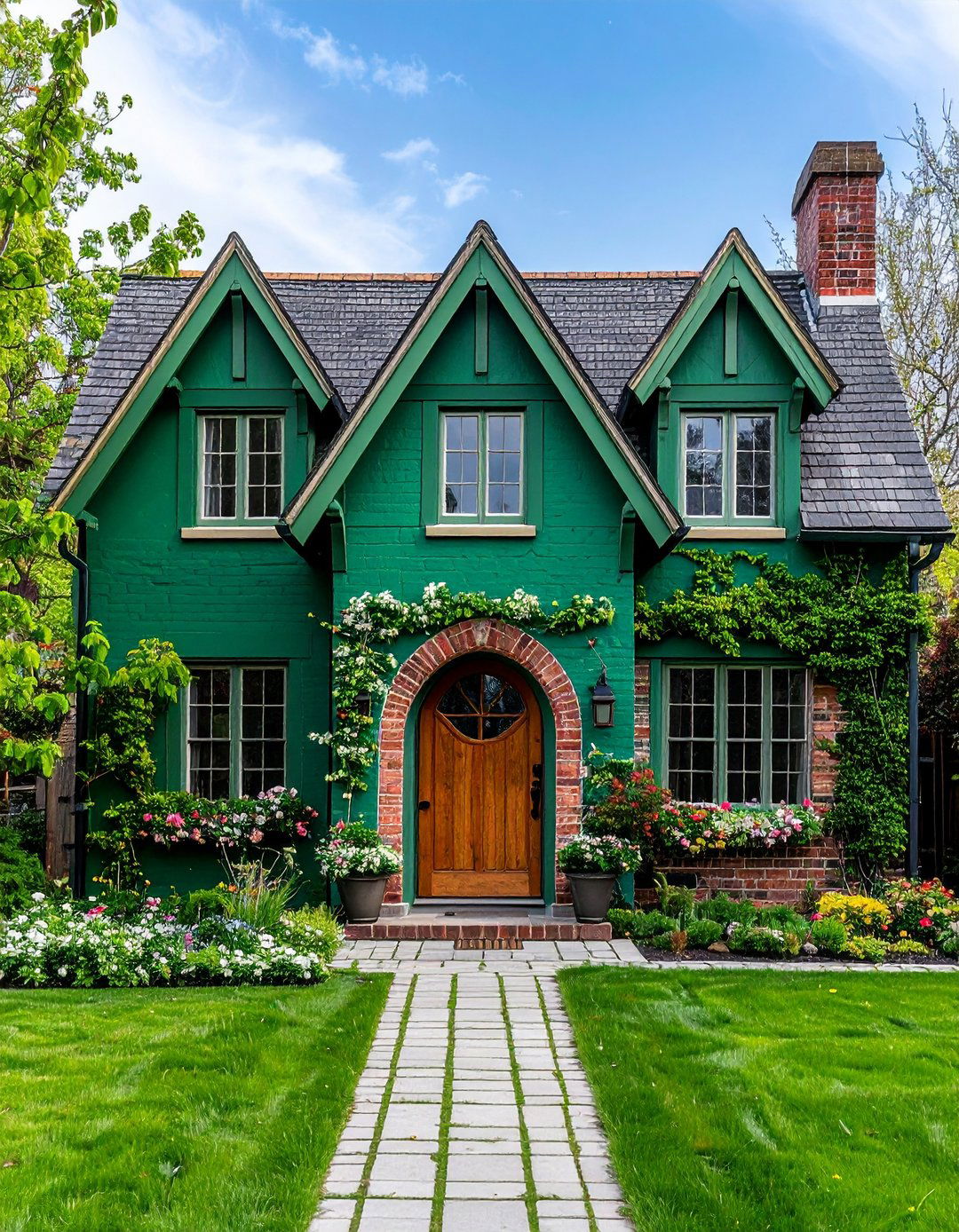
Combine the charm of Tudor architecture—half-timbering, steep gables, and leaded windows—with a sage green brick base. Paint upper timber accents in a complementary dark green or charcoal, and finish with stone foundations for authenticity. Incorporate arched doorways with heavy wooden doors and wrought-iron hardware. Sage green unifies the medieval inspiration with a fresh, earthy tone, making the cottage both storybook and contemporary.
14. Prairie Style Accent

Honor Frank Lloyd Wright’s Prairie principles by painting low-slung brick walls sage green and accenting horizontal lines with stone bands or wood trim. Use flat or gently sloping roofs with deep overhangs, casement windows, and integrated planters. Sage green reflects the Midwest landscapes that inspired this style, blending structure and site seamlessly. The result is an organic, harmonious exterior that pays tribute to architectural heritage.
15. Eco-Friendly Statement
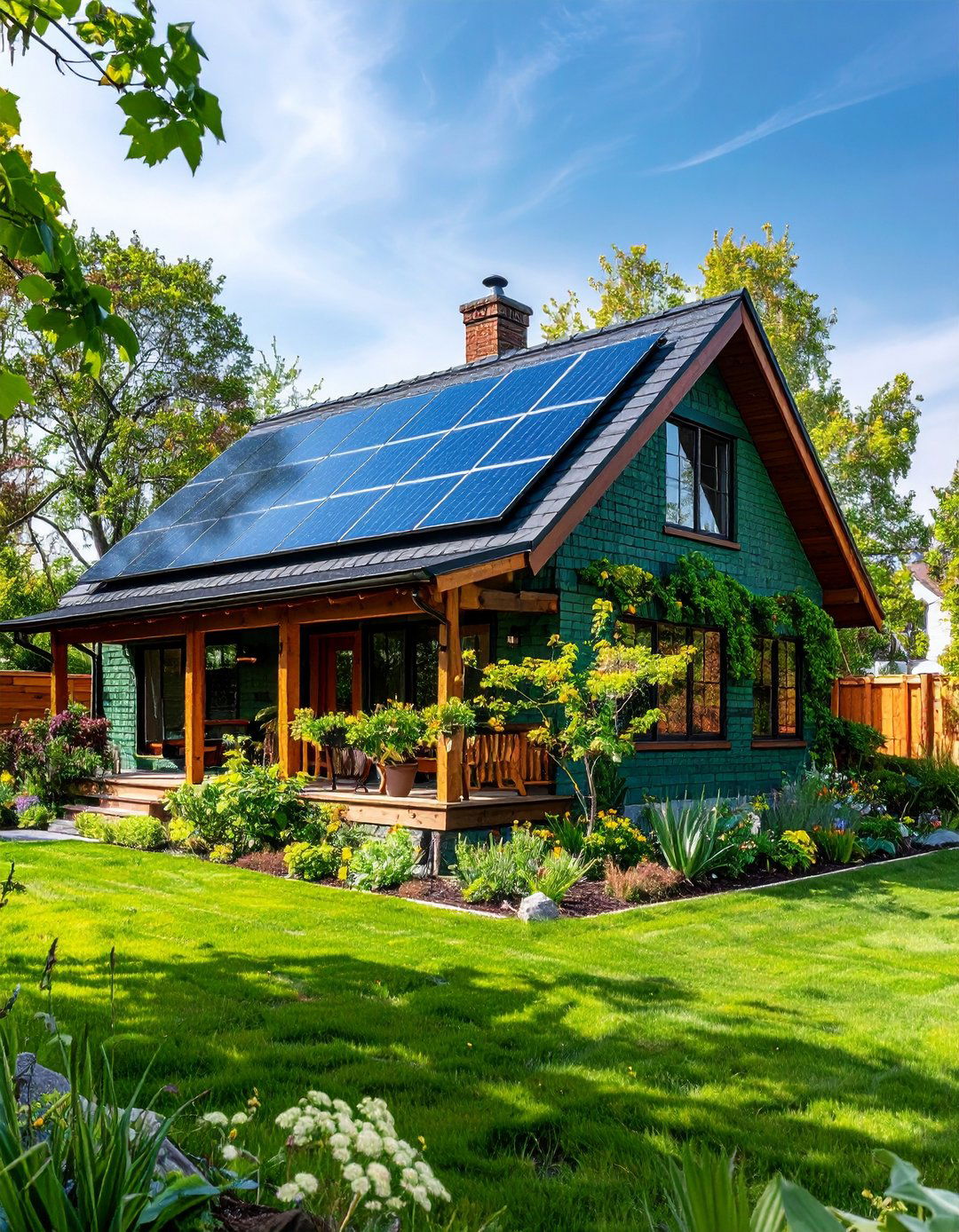
Opt for an environmentally conscious exterior by choosing low-VOC sage green paint on brick and pairing it with solar panels, rainwater harvesting systems, and green roofs. Accent with sustainably sourced wood cladding and native plant gardens. The muted green brick complements eco-elements, creating an integrated, green-living showcase that’s as responsible as it is beautiful.
16. Dark Trim Contrast
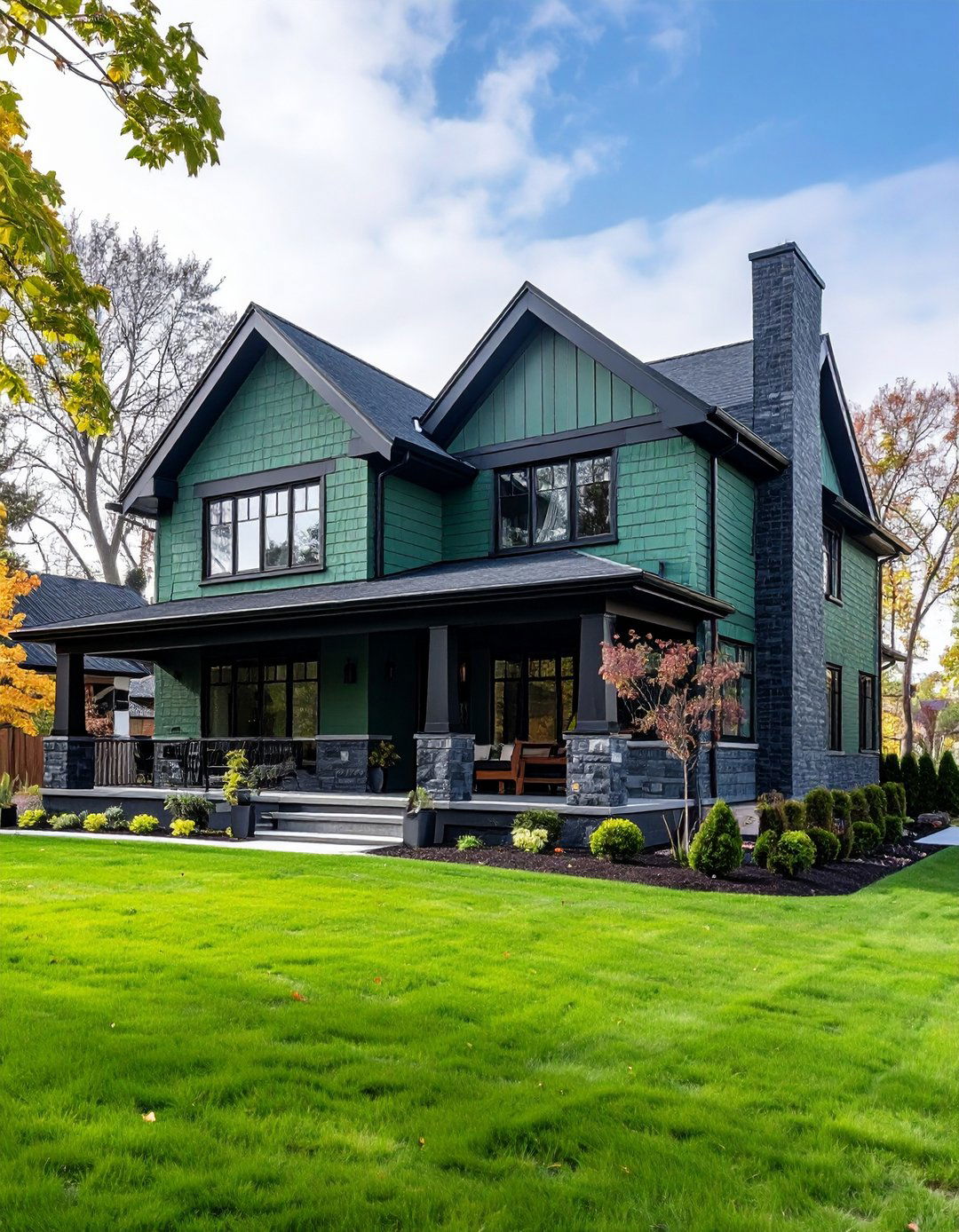
Make sage green-painted brick pop by framing it with deep charcoal or black trim around windows, doors, and eaves. The stark contrast outlines architectural features sharply, lending a modern drama to traditional materials. Keep ornamentation minimal to let the color interplay shine. This look is striking by day and bold by night when paired with strategic exterior lighting.
17. Monochromatic Layering
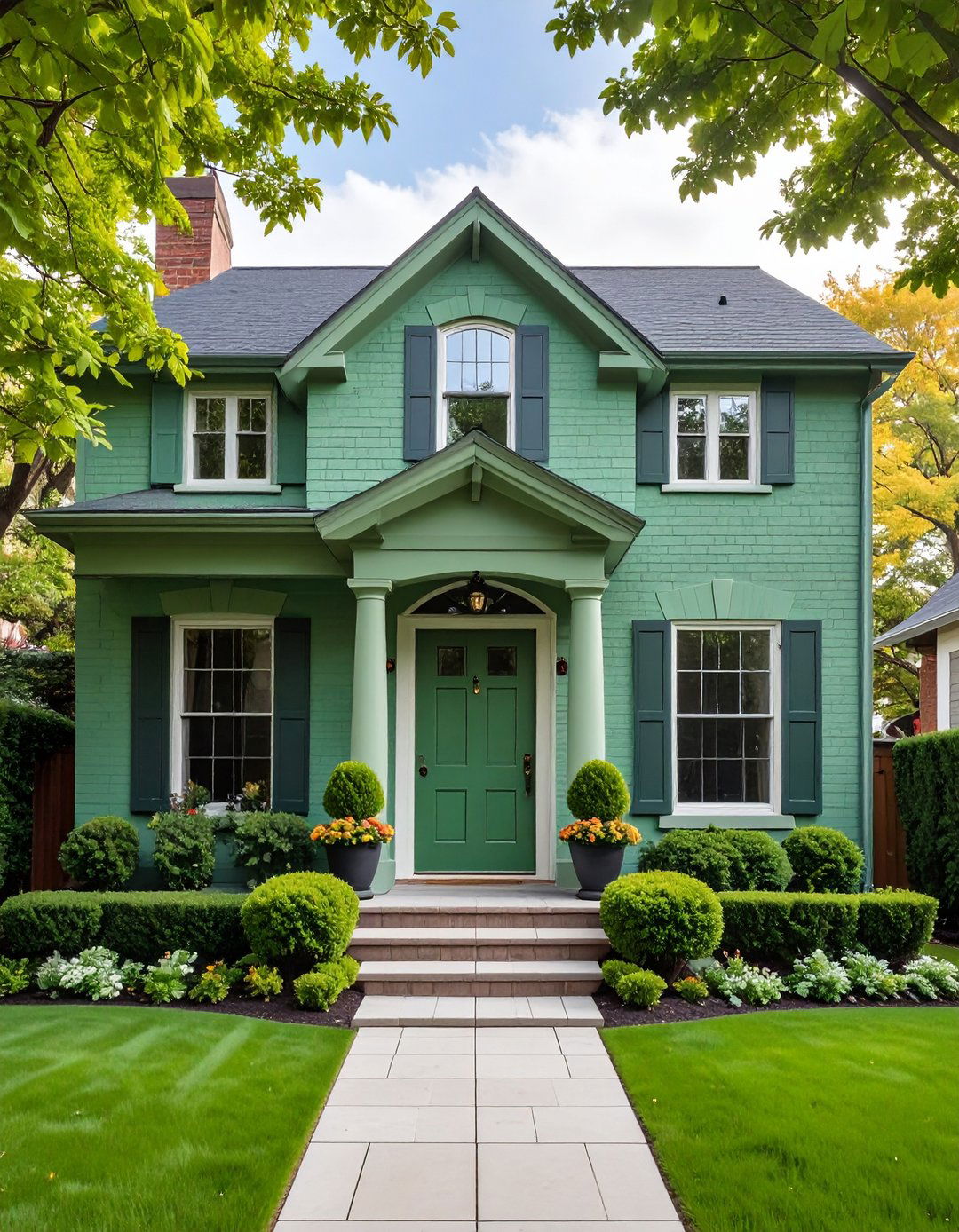
Create depth by using multiple shades of green—paint brick a medium sage, trim in pale mint, and doors in rich olive. The monochromatic scheme feels cohesive yet dynamic, as subtle hue shifts accentuate different architectural planes. Matte and eggshell finishes interplay under varying light, enhancing texture and shadow. This tonal strategy offers a sophisticated, harmonious exterior palette.
18. Accent Door Pop
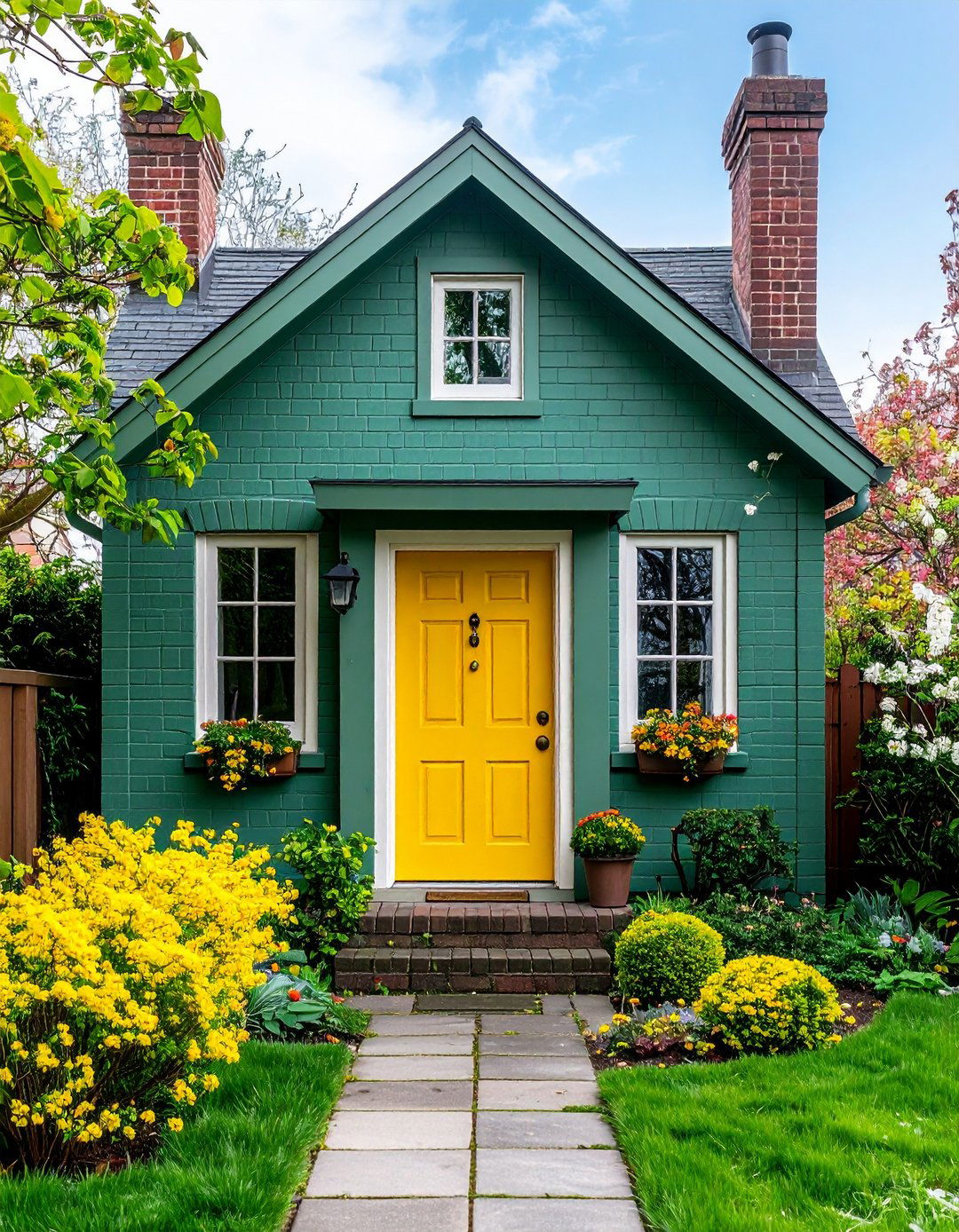
Paint the brick sage green and choose a contrasting bold color—mustard yellow, coral, or navy—for the front door. This single-element accent draws the eye, injecting personality into a restrained exterior. Surround with minimal hardware and refined lighting to maintain balance. The accent door becomes a focal point, celebrating both color and design restraint.
19. Landscape Integration
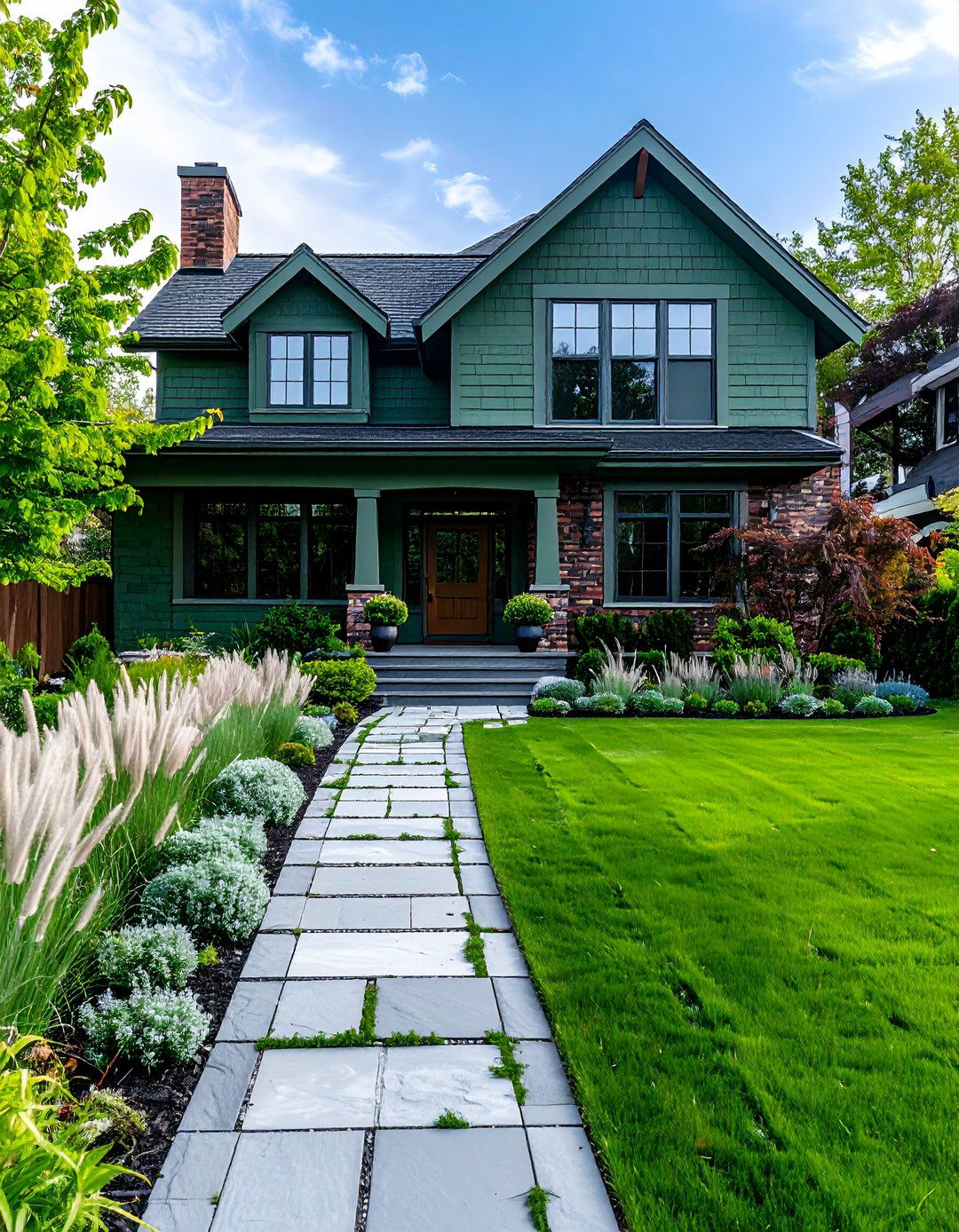
Blend your sage green brick house seamlessly into its surroundings by coordinating paint and planting schemes. Use shrubs and ornamental grasses with silver-green foliage—lamb’s ear, juniper, and sage—for continuity. Incorporate stone pathways and native perennials to mirror brick tones and textures. This holistic approach turns the home and garden into an integrated landscape tapestry.
20. Sustainable Materials
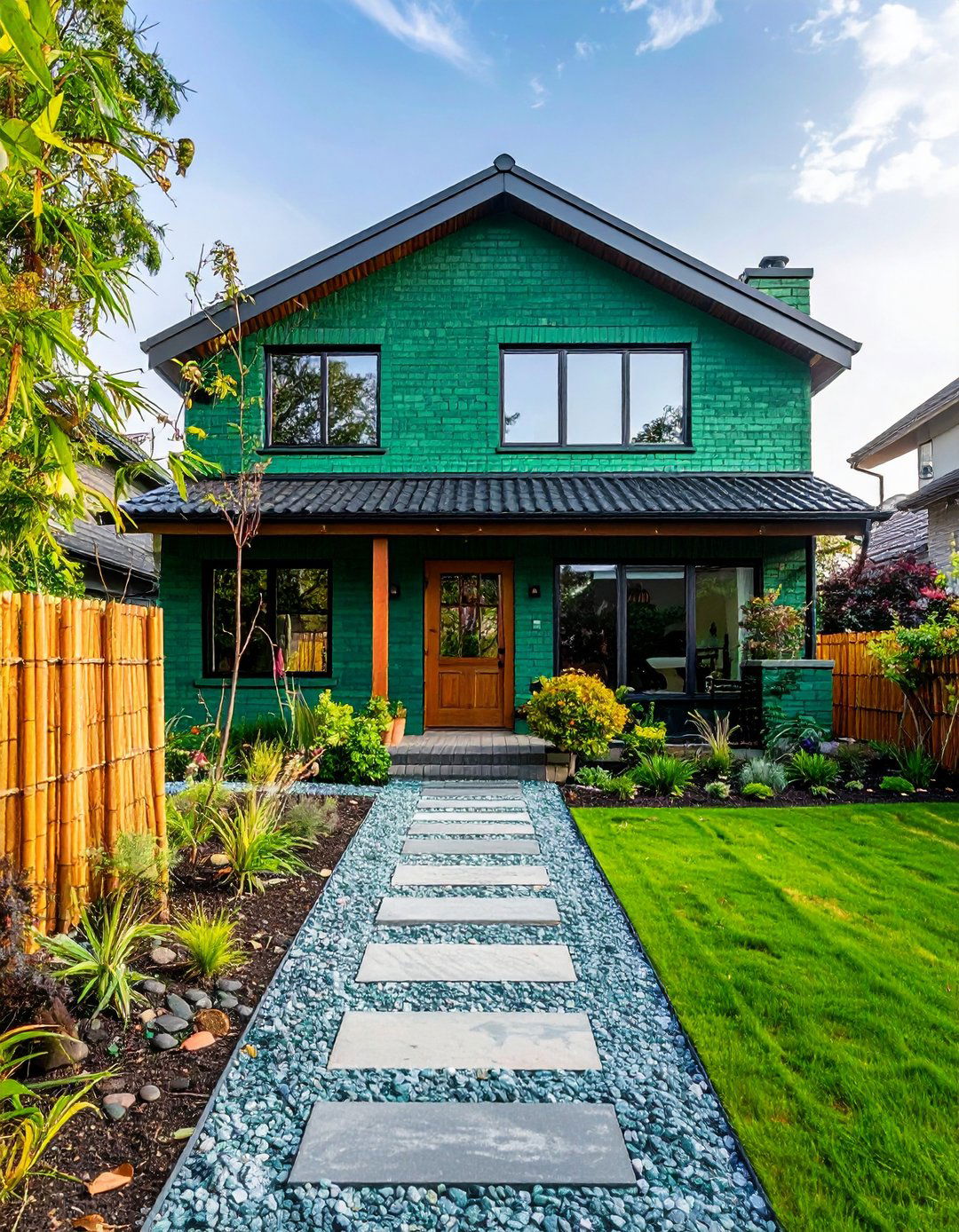
Highlight a commitment to sustainability by pairing sage green-painted brick with recycled glass aggregate pathways, reclaimed wood pergolas, and bamboo fencing. Use eco-friendly paints and finishes throughout. The muted green brick becomes part of a larger narrative of responsible material choices, demonstrating that style and stewardship can coexist.
Conclusion:
Sage green-painted brick offers endless versatility, adapting to farmhouse, modern, cottage, and eclectic styles alike. Whether used as a unifying backdrop or a dynamic statement, its muted green-gray depth brings warmth, serenity, and curb-appeal to any home. By pairing sage green with contrasting trims, complementary materials, and thoughtful landscaping, you can create an exterior that’s both timeless and deeply personal. Embrace this trend to transform your brick façade into a sophisticated, nature-inspired haven.


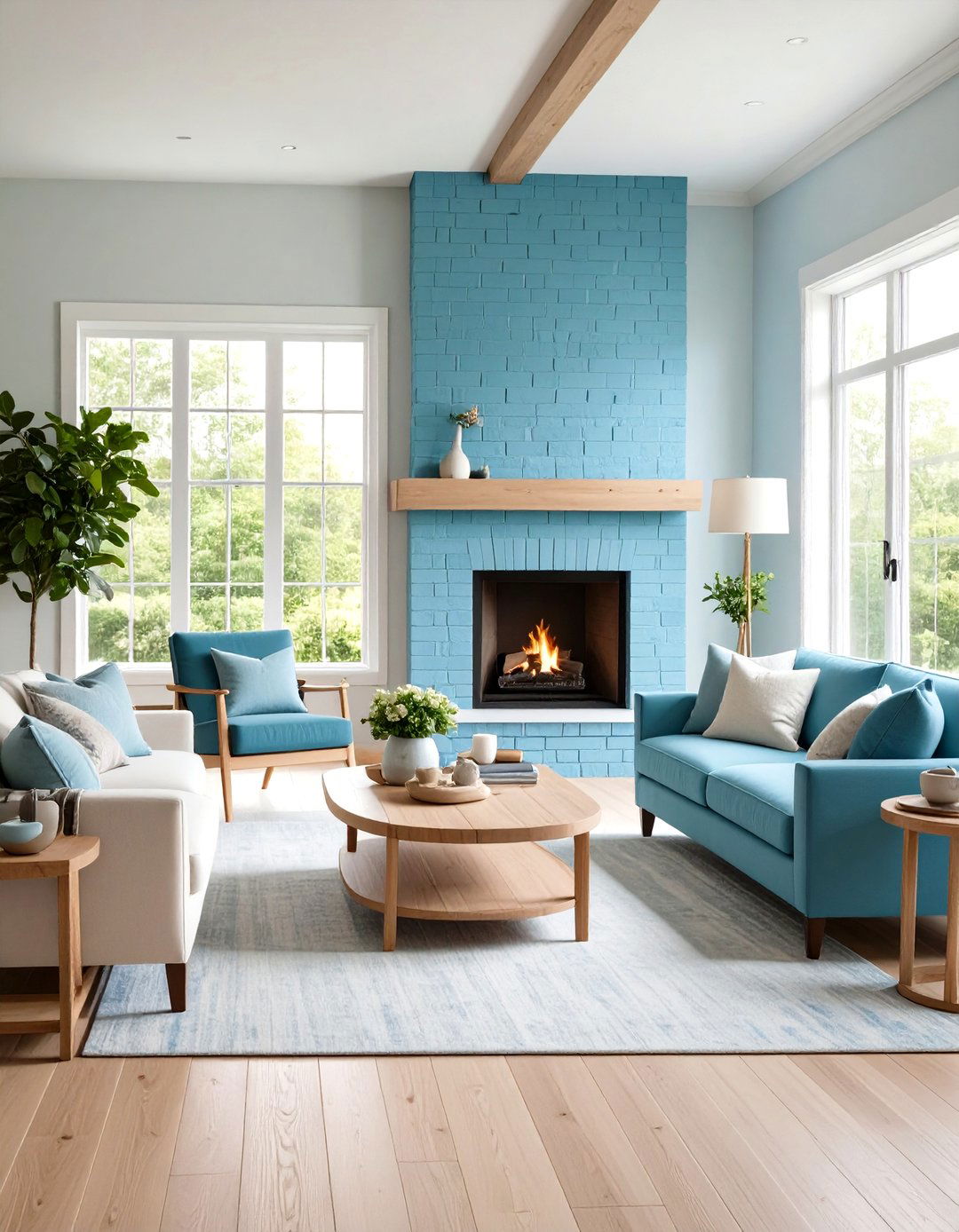
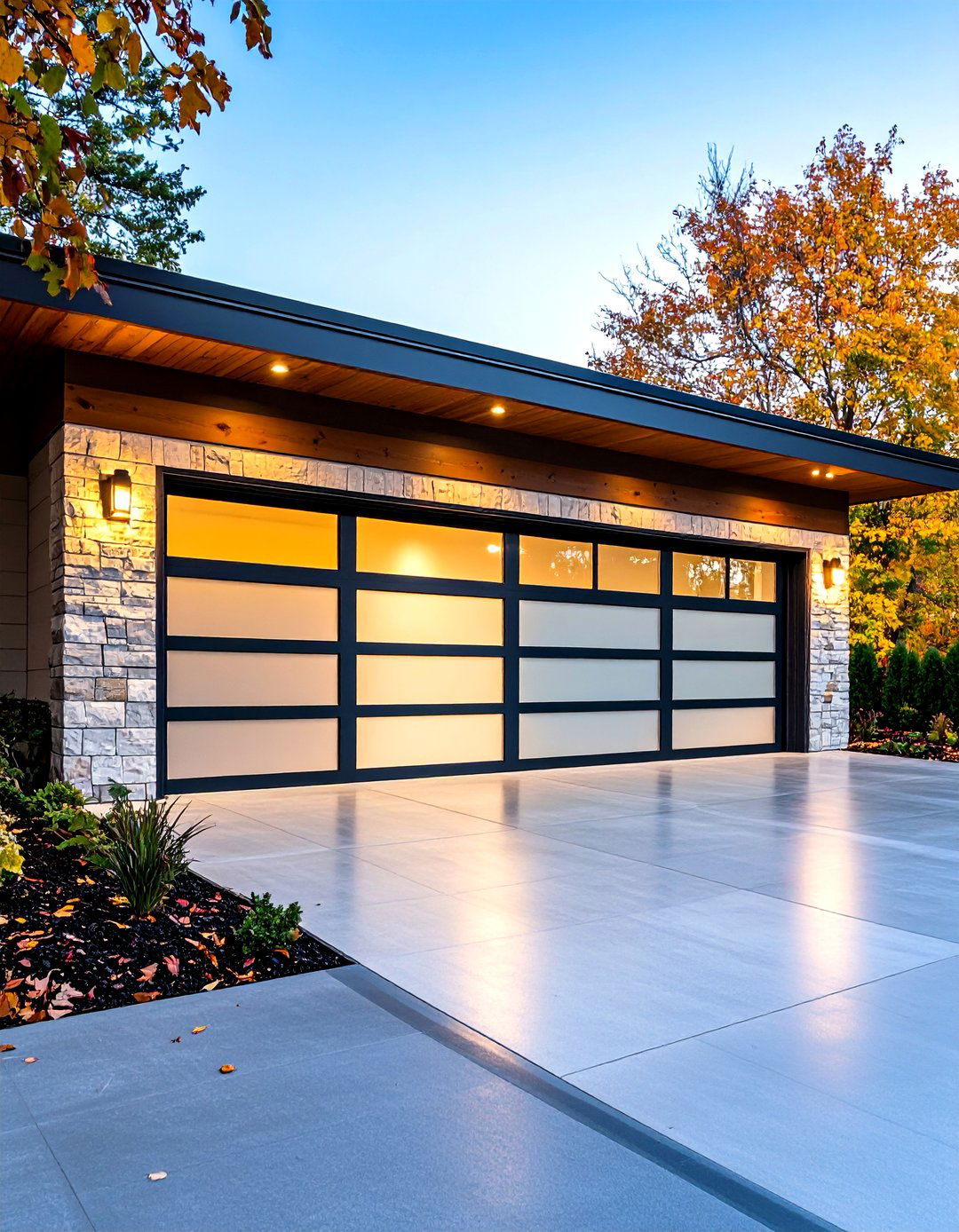
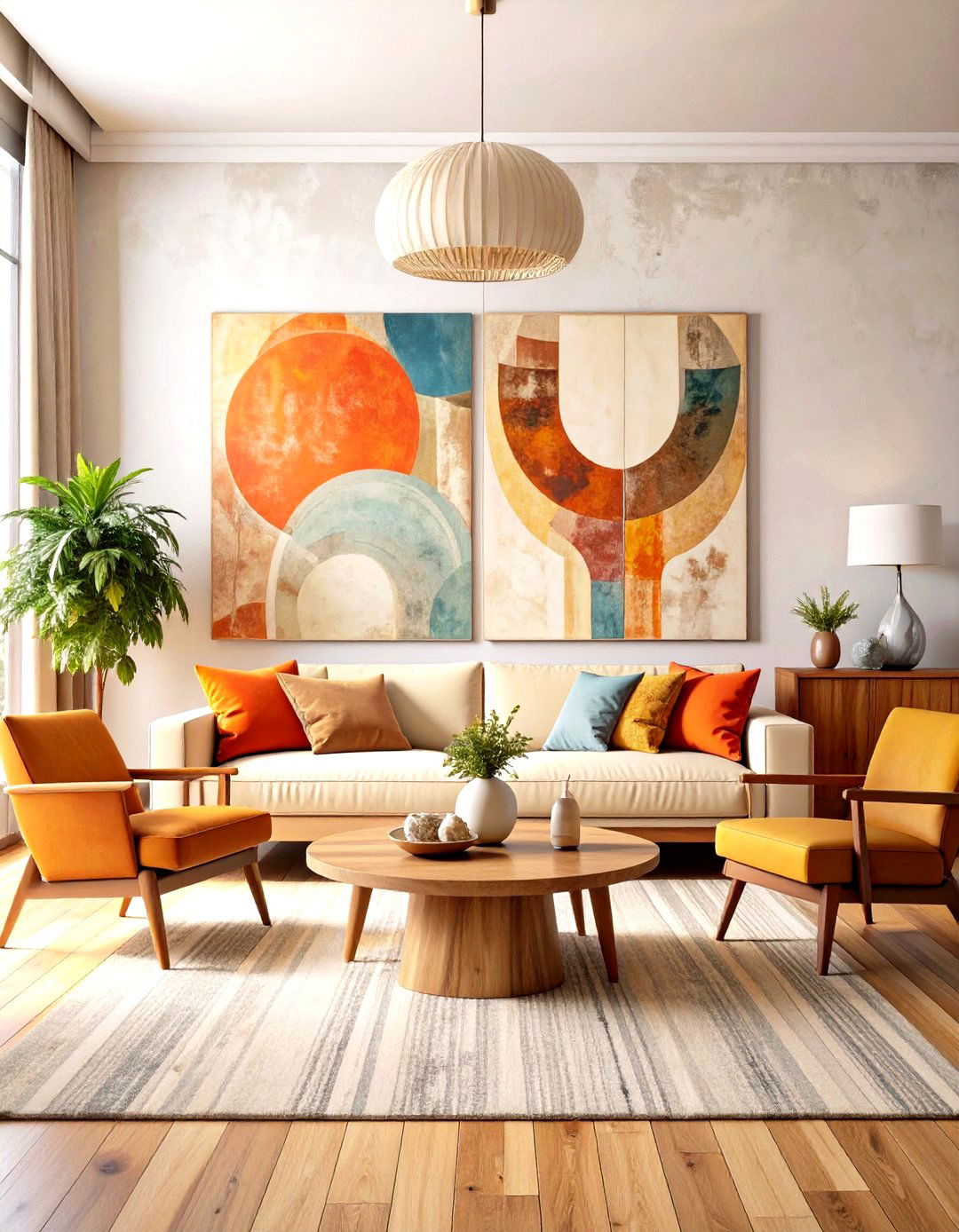
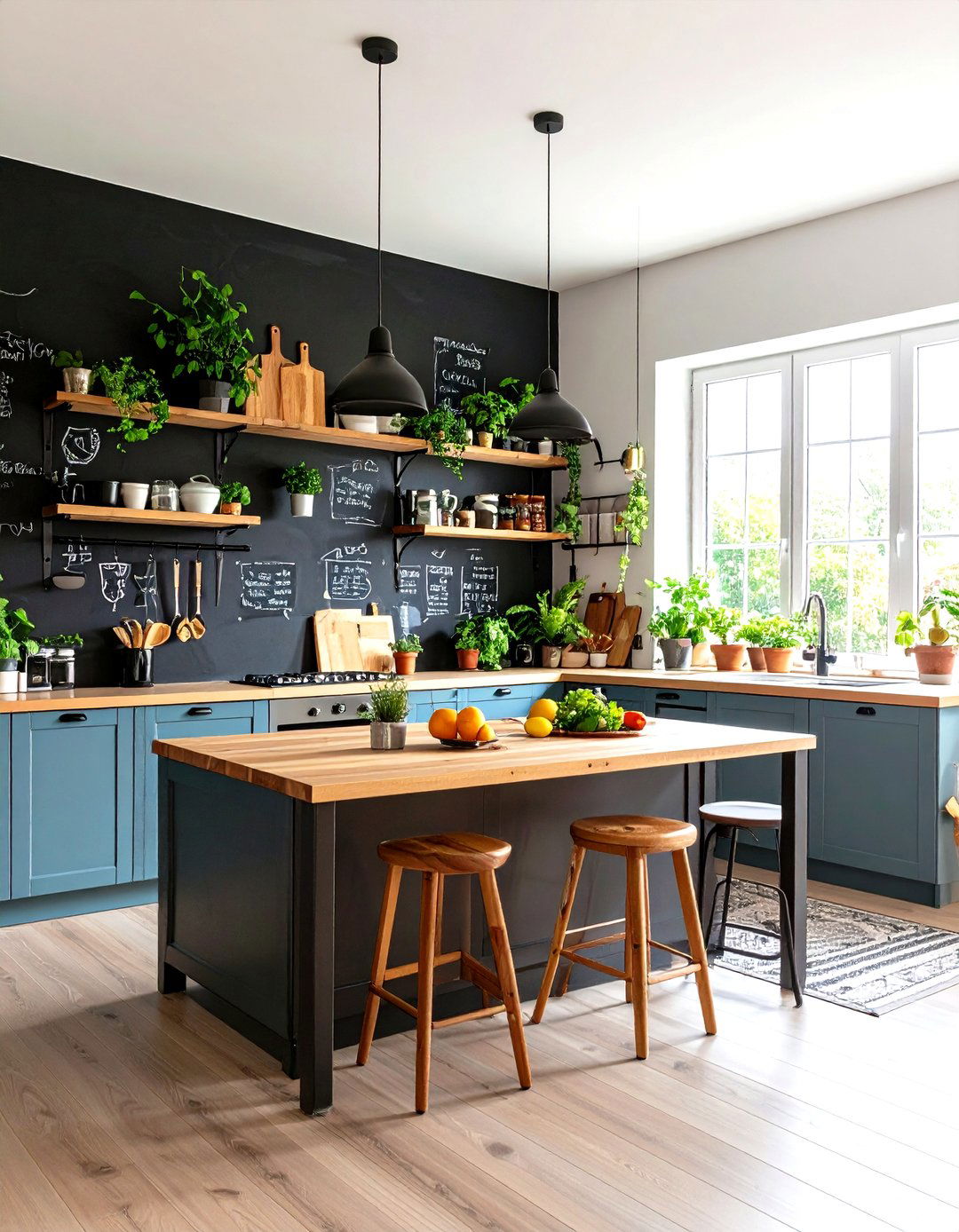

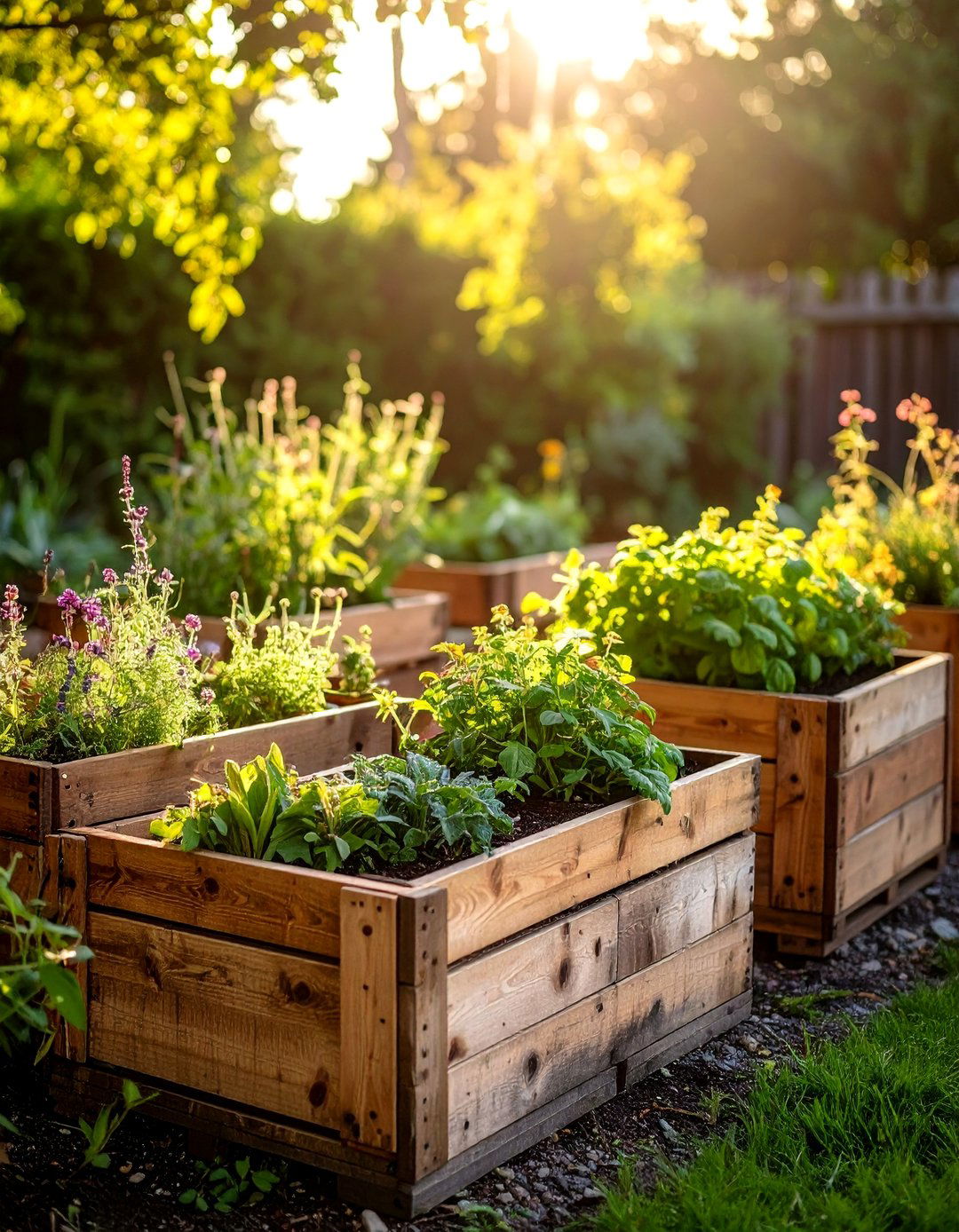
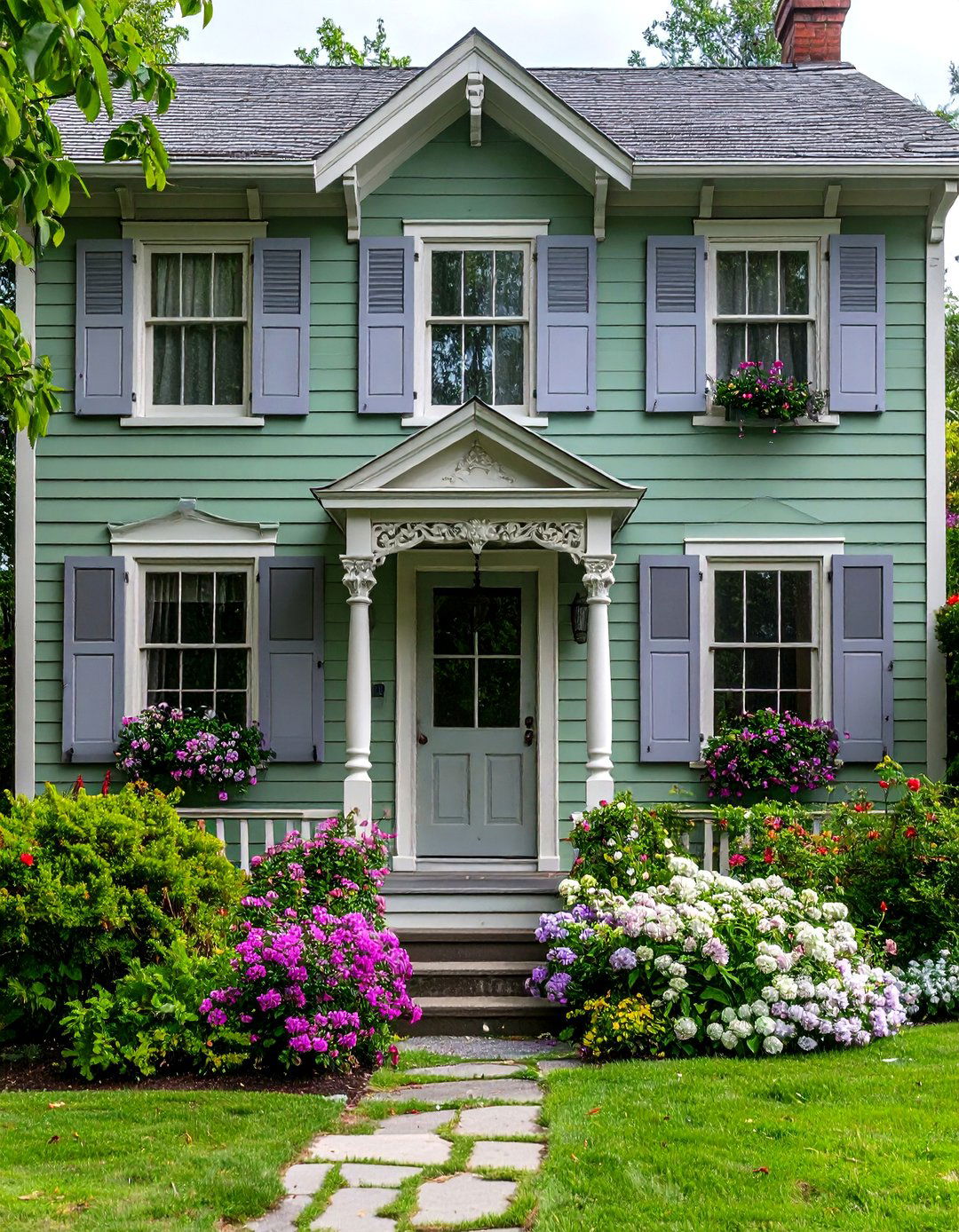
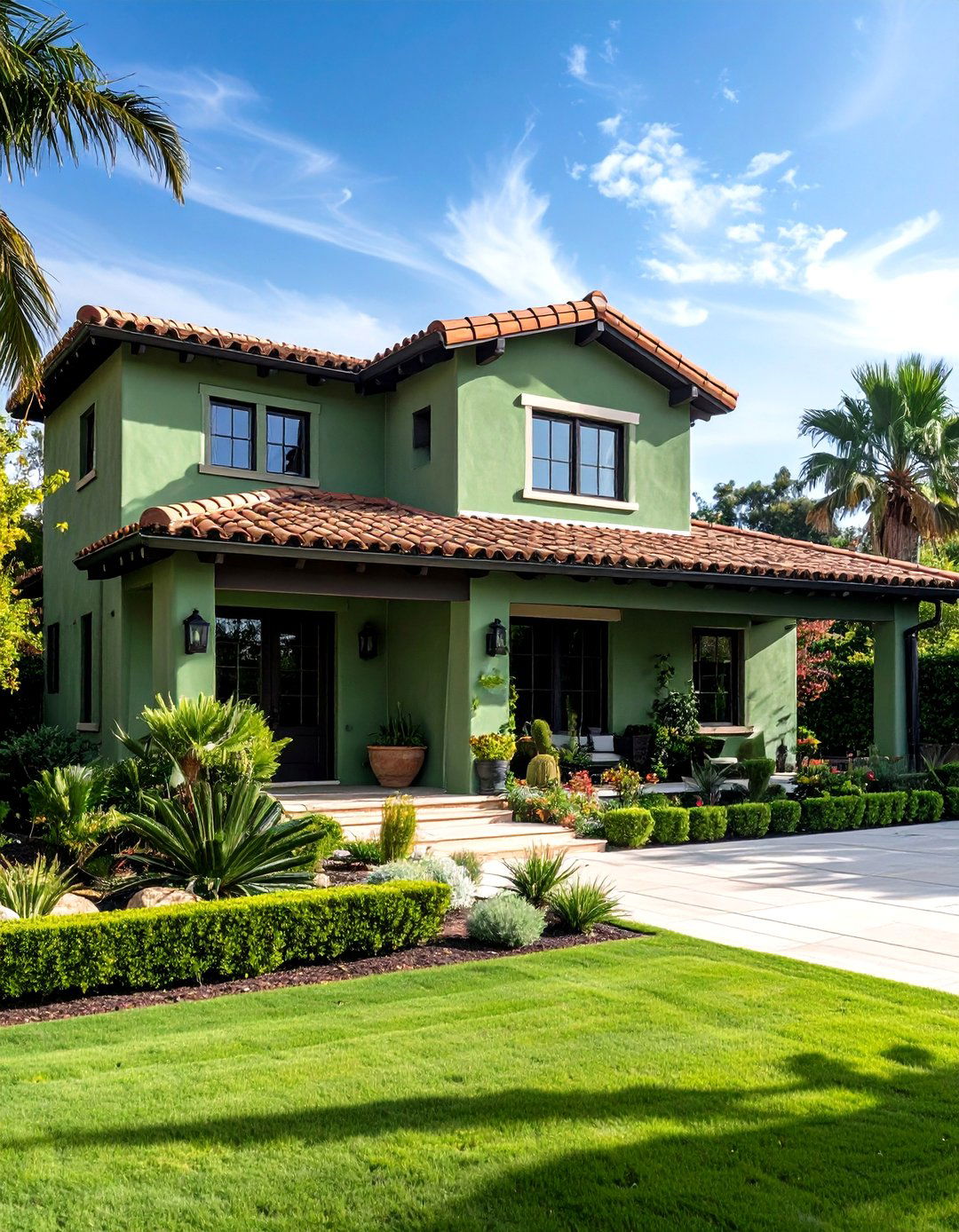
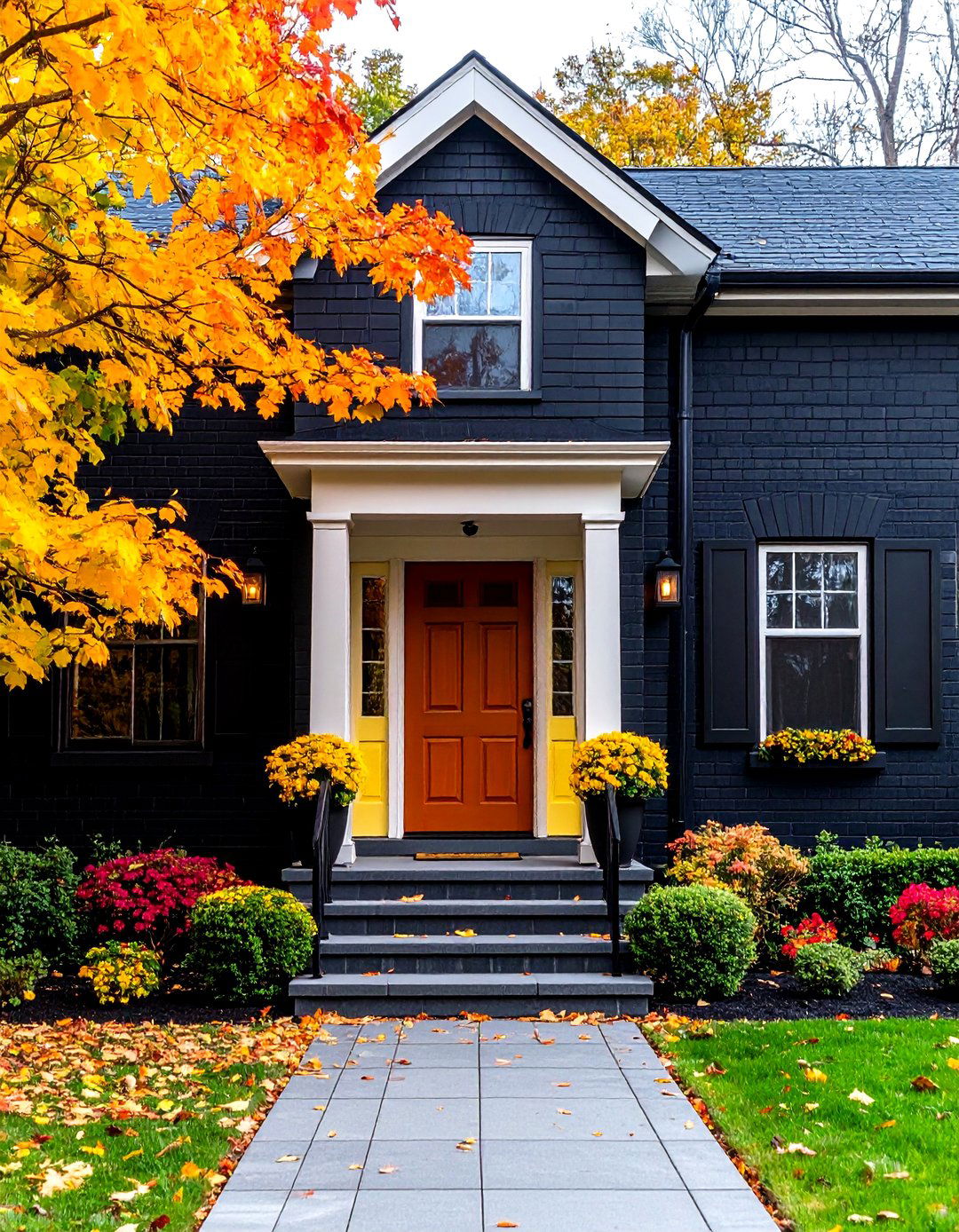
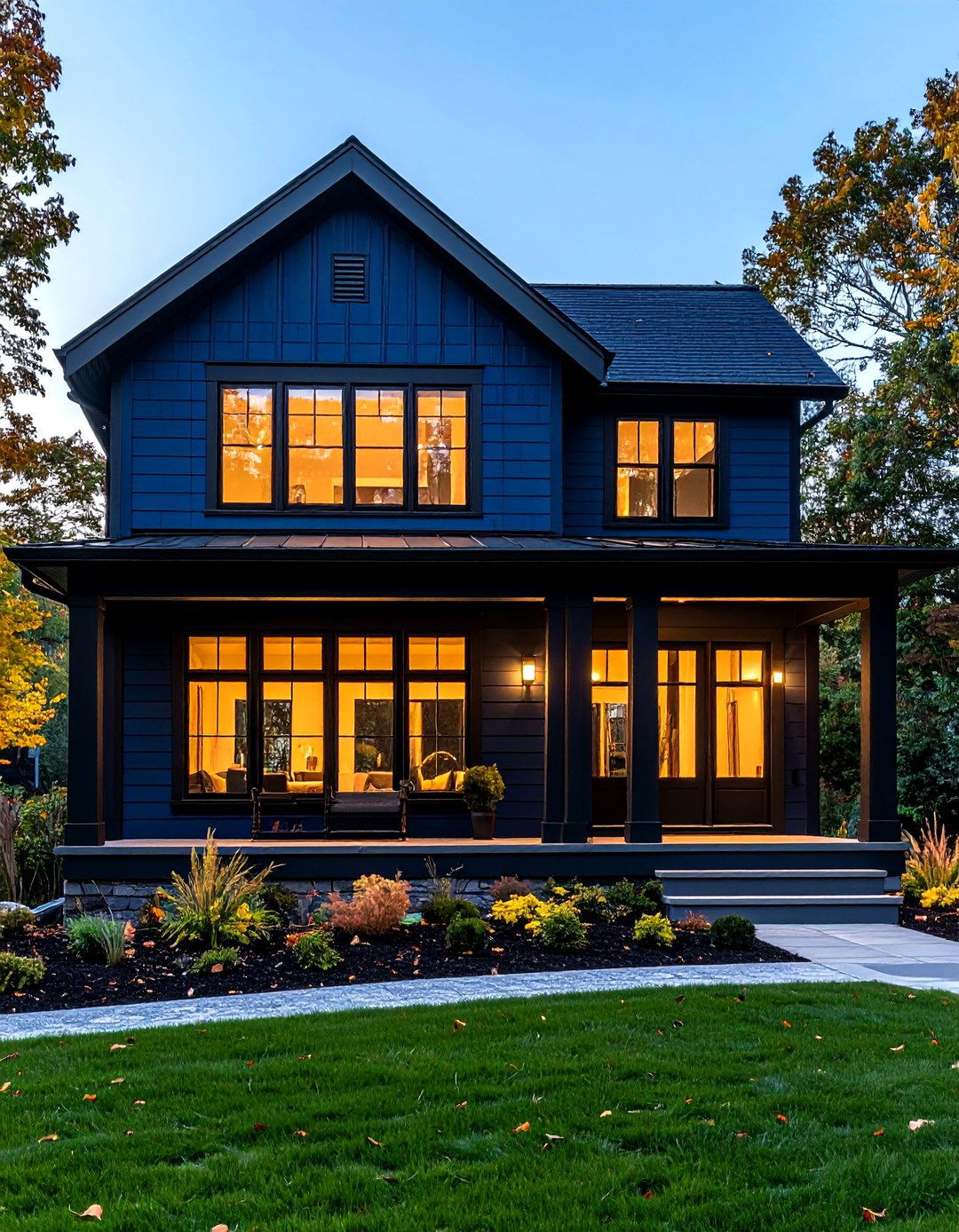
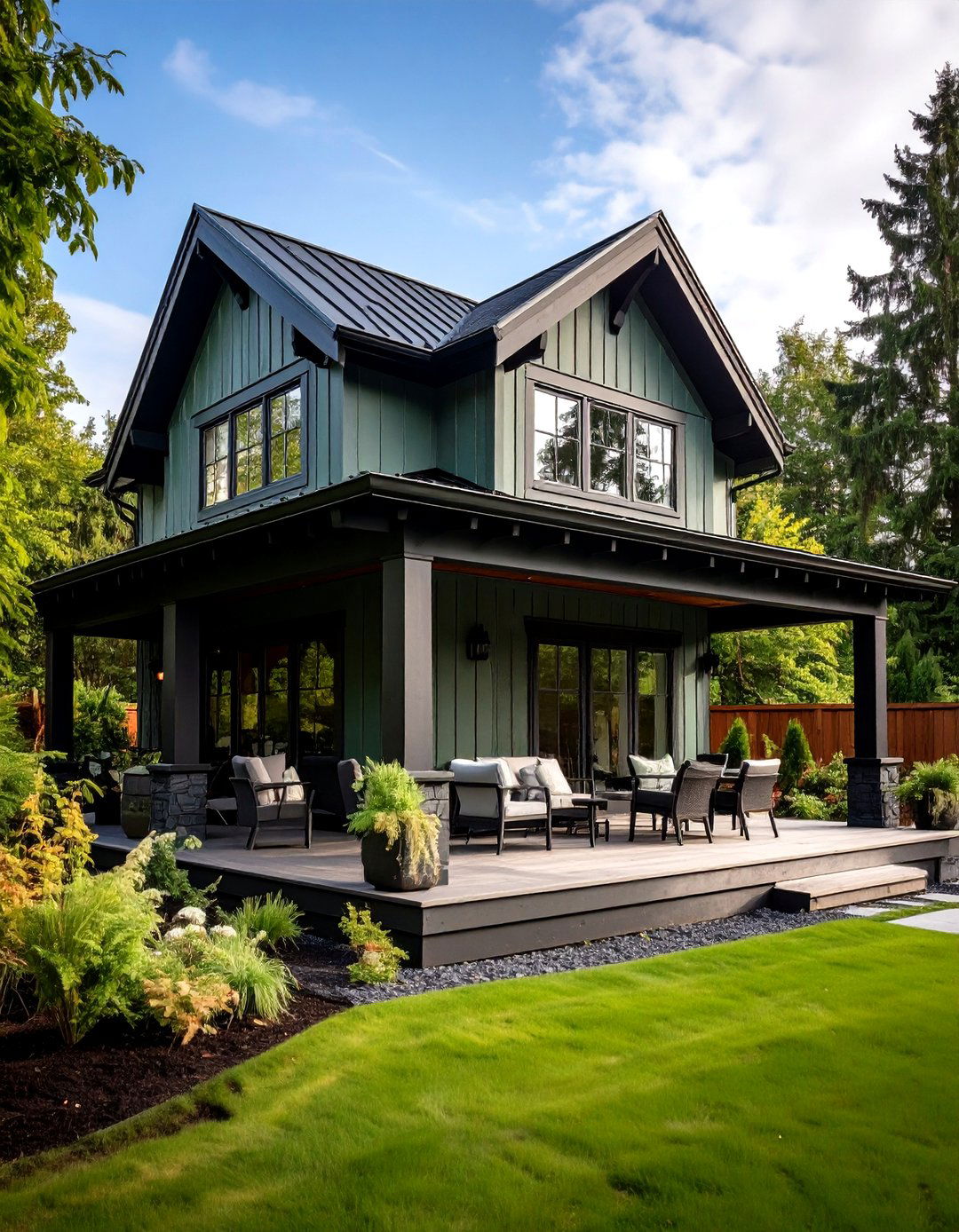
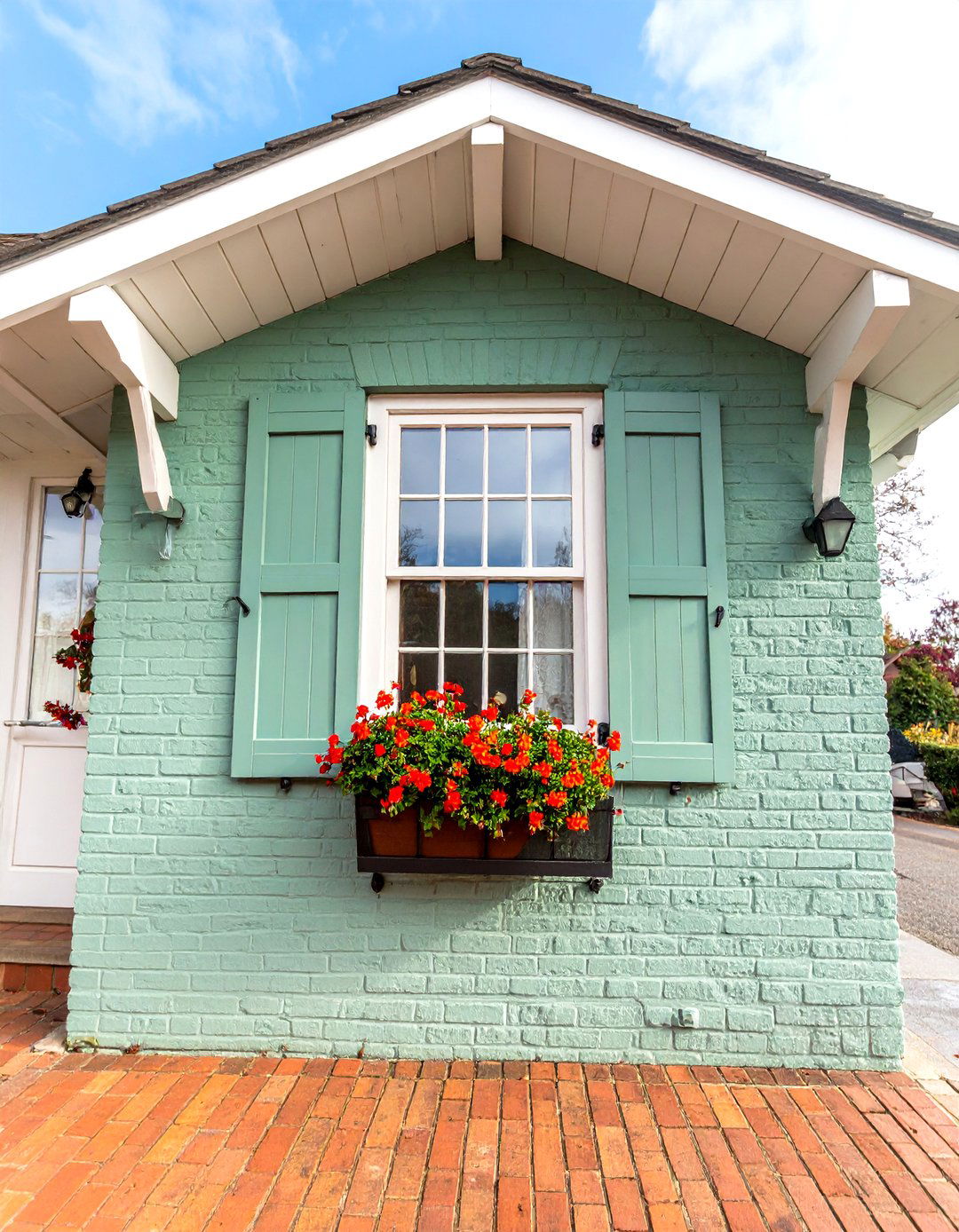
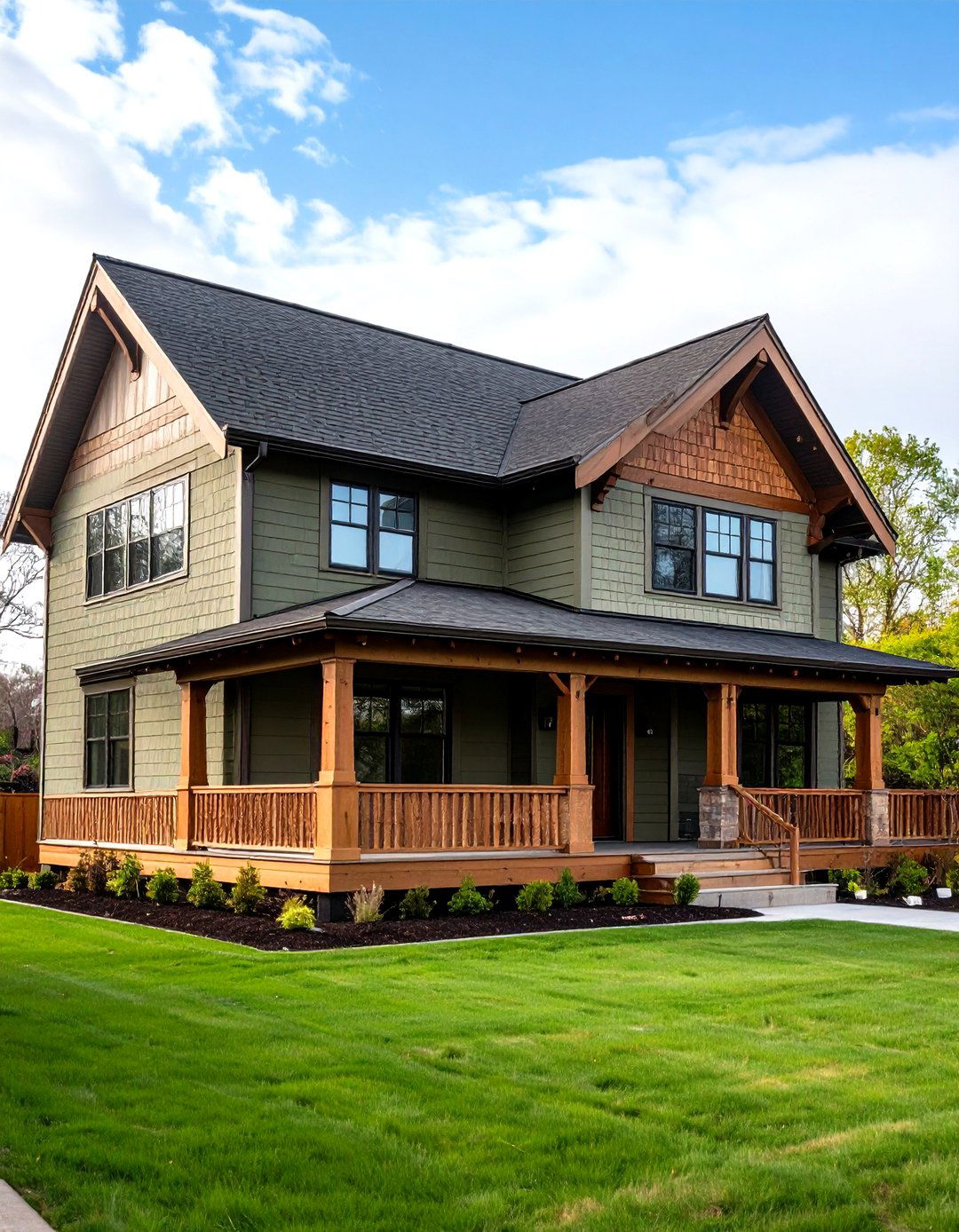
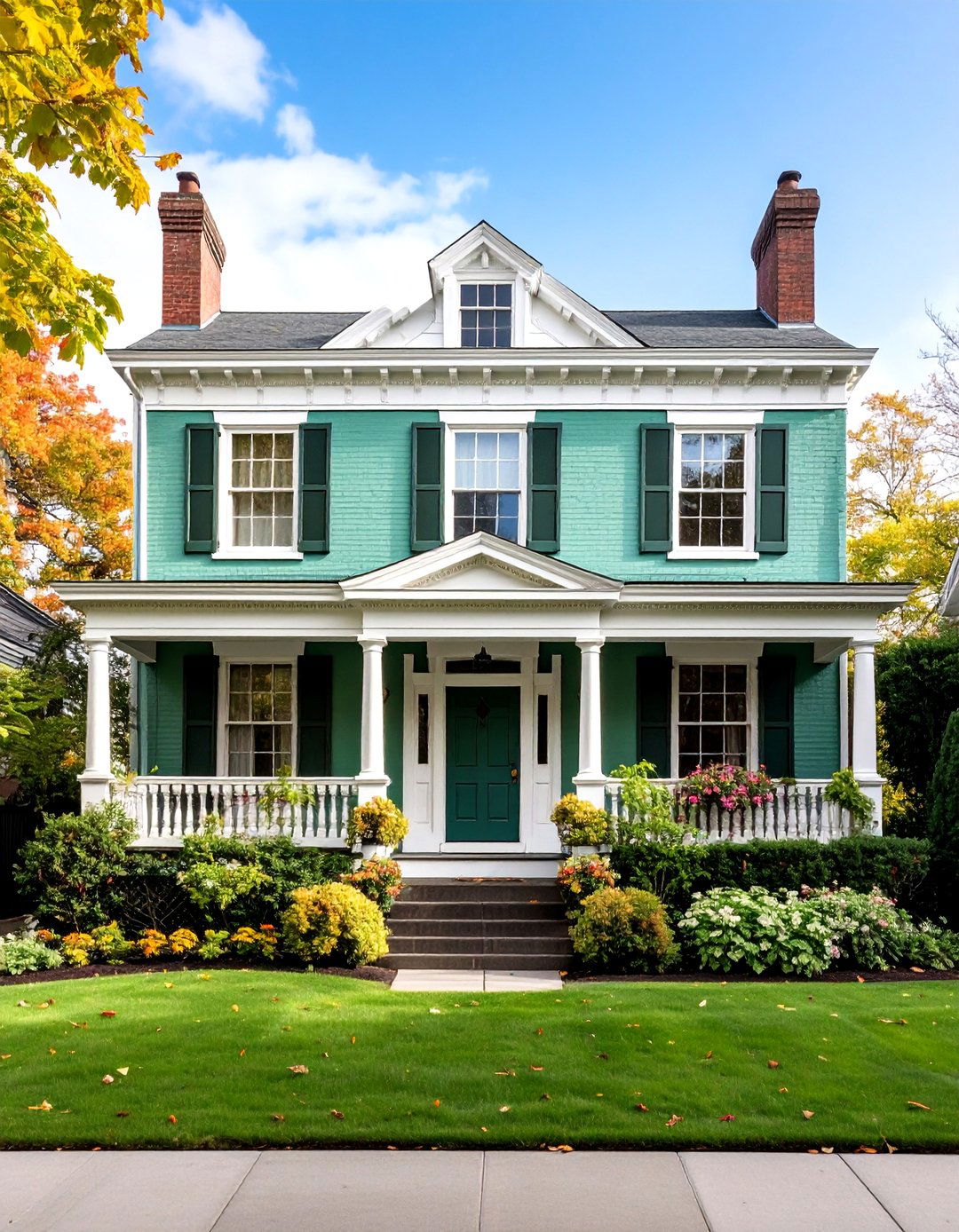
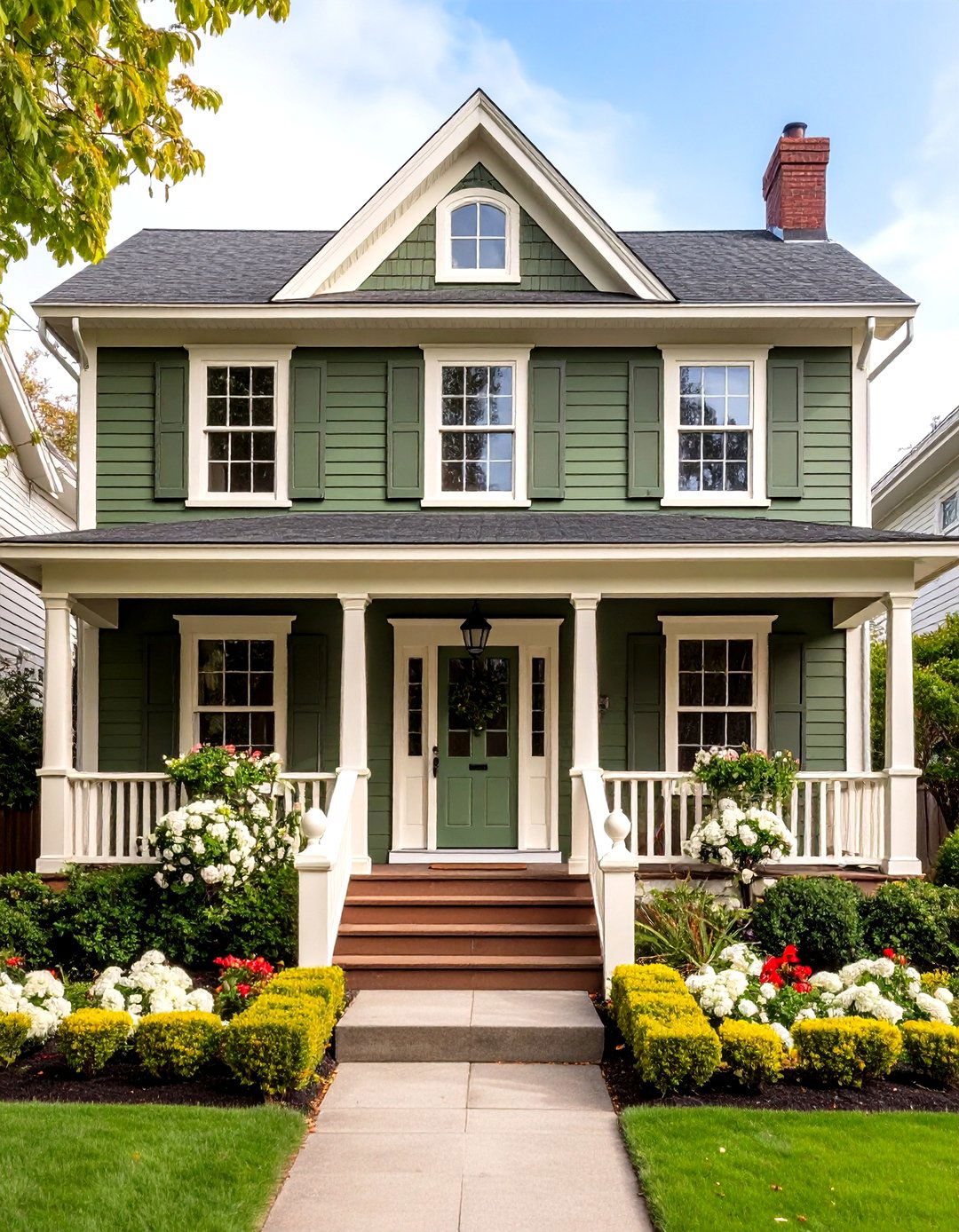
Leave a Reply